

 EGGLESTON SCHWARTZ, CPTM
EGGLESTON SCHWARTZ, CPTM



 EGGLESTON SCHWARTZ, CPTM
EGGLESTON SCHWARTZ, CPTM
The pace of technology is evolving faster and faster … it feels almost impossible to keep up. Talk of artificial intelligence has dominated our news feeds in recent months, both inspiring us and downright scaring us. But learning leaders have always needed to select the right technology for their training programs — deciphering fad from trend — and today is no different.
While technology will continue to grow more sophisticated and help organizations improve their business operations, leaders must stay grounded and focused on their mission and goals. The company’s goals and values should guide all decisionmaking across the business, including learning and development (L&D). And while leaders must remain vigilant and monitor industry trends, they must also ensure their decisions are based on the needs of the business. And that starts with strategic alignment.
For L&D, learning leaders must ensure their training programs are strategically aligned to the goals of the business or risk deploying programs that have little to no business value. Training programs must enable employee performance; to do this, learning leaders must cultivate a performancefirst mindset.
The cover story in this issue of Training Industry Magazine examines the need to support learners throughout the learning journey to sustain training.
As we all know, one-and-done training does not work, and it should not be a part of our learning strategy. Learning leaders must shift their mindset from creating training first to supporting employee performance first. This requires creating a learning strategy that begins in the workflow — where the real work happens.
This edition addresses a variety of topics to enable a better learning experience for employees — from redefining the learning ecosystem to bridging the digital skills gap to creating more effective leaders to leveraging the power of peer-topeer learning. Our columnists in this issue offer their expert insights on the changing nature of work and how learning leaders can truly lead change in their organizations.
It’s an exciting time for L&D. The possibilities of creating learning experiences that add value to the organization are limitless thanks to emerging technologies and dedication from learning leaders like you.
As always, we love to hear from our readers, so please reach out to our team and let us know how you’re staying focused on what matters — your people!
Michelle Eggleston Schwartz, CPTM, is the editor in chief of Training Industry, Inc., and co-host of “The Business of Learning,” the Training Industry podcast. Email Michelle.

LEADERS MUST ENSURE THEIR DECISIONS ARE BASED ON THE NEEDS OF THE BUSINESS. AND THAT STARTS WITH STRATEGIC ALIGNMENT.


16 21 24 28 33
THE POWER OF A PERFORMANCE-FIRST MINDSET
By Bob MosherShift your L&D focus from training to supporting performance. FROM CRITICISM TO CATALYST: 5 STEPS TO EMPOWER YOUR FEEDBACK
By Rachael Pemberton-BaghurstConstructive feedback involves joint problem-solving and mutual commitment.
BRIDGING THE DIGITAL SKILLS GAP
By Danny KingUpskilling, reskilling and credentials are essential to bridging the digital skills gap.
SHORING UP MIDDLE MANAGERS: STRATEGIES TO EQUIP YOUR MANAGERS TO LEAD THEIR TEAMS THROUGH CHANGE AND UNCERTAINTY
By Kacie WaltersExplore the five concepts that make up the manager ecosystem.
DEVELOPING QUANTITATIVE RUBRICS FOR EMPLOYEE COMPETENCY DETERMINATION
By John G. Peters, Jr., Ph.D.Learners must develop their own learning plans that guide them through the changing L&D landscape.
36 41 44 46 50
REDEFINING THE LEARNING ECOSYSTEM
By Elizabeth GreeneAlign your learning approach with your organization’s structure, needs and culture.
AN EVALUATION STRATEGY THAT’S OUT OF THIS WORLD
By Paul Leone, Ph.D.Adjust your evaluation strategy to account for any organizational goals.
WHY INTERNAL CUSTOMER SERVICE IS MORE VITAL THAN EVER
By Jane RexworthyFoster better relationships and training by embracing a “prosumer” mindset.
4 IDEAS FOR BUILDING PEER-TO-PEER LEARNING IN SALES TEAMS
By Michael McNaryReplicate the knowledge sharing of the sales floor in a hybrid environment.
THE POWER OF SERVANT LEADERSHIP
By Jason R. WeberEmpower your leaders to share in team goals, recognize individual strengths and more.
Strategic alignment is key to ensuring long-term business success.
Create an atmosphere of collaboration with leadership modeled on empathy.
Help your learners navigate content overload with UX design, personalization and more.
Develop your leaders’ personal brands and improve employee trust.
Mitigate your team’s DEI fatigue by focusing on progress over perfection.
The future of L&D is looking bright with the demand for L&D professionals on the rise.
Your learners can leverage constant change to fuel their development.
Unlock a high-performance mindset among your learners.
By Sarah Gallo, CPTMKeep up with the latest in the training industry by reading news from the last quarter.
CEO
Ken Taylor ktaylor@trainingindustry.com
EDITOR IN CHIEF
Michelle Eggleston Schwartz meggleston@trainingindustry.com
SENIOR EDITOR
Sarah Gallo sgallo@trainingindustry.com
EDITOR
Mike Allen mallen@trainingindustry.com
CREATIVE DIRECTOR
Amanda Longo alongo@trainingindustry.com
DESIGNER Mary Lewis mlewis@trainingindustry.com
DESIGNER Kellie Blackburn kblackburn@trainingindustry.com
DESIGNER Cassandra Ortiz cortiz@trainingindustry.com
JUDI BADER, CPTM
Senior Director of Culture, Learning and Development Willy’s Mexicana Grill
MICHAEL CANNON, M.ED. Vice President, Global Learning and Enablement Rimini Street
BARBARA JORDAN, CPTM Group Vice President, Global Learning & Development Sims Metal Management
CATHERINE KELLY, MA, BSN, RN, CPTM Director of Learning Programs Brookdale Senior Living
SHIREEN LACKEY, CPTM
Senior Management and Program Analyst, Office of Business Process Integration Veterans Benefits Administration
SCOTT NUTTER Principal/Owner Touch & Go Solutions
DESIGNER
Rylee Hartsell rhartsell@trainingindustry.com

DESIGNER
Sha’Meire Jackson sjackson@trainingindustry.com
ADVERTISING SALES sales@trainingindustry.com
MISSION
Training Industry Magazine connects learning and development professionals with the resources and solutions needed to more effectively manage the business of learning.
SUBSCRIPTIONS
MATTHEW S. PRAGER, CPTM Executive Training Manager U.S. Government
MARC RAMOS Chief Learning Officer Cornerstone OnDemand
KELLY RIDER Chief Learning Officer PTC
DR. SYDNEY SAVION Global Learning Futurist Google
KERRY TROESTER, CPTM Director, North America Sales Training Lenovo
NATASHA MILLER WILLIAMS Head of Diversity & Inclusion Ferrara
KEE MENG YEO Adjunct Professor Grand Valley State University & Davenport University
ELECTRONIC: Sign up at TrainingIndustry.com to receive notification of each new digital issue.
PRINT: Print copies are available for purchase at magcloud.com for $17.95.
ARTICLE REPRINTS
To order reprints of articles, please contact Training Industry at editor@trainingindustry.com
Yes! We can provide you with great ID talent!
We get it—we know you’re under pressure.
We’re exceptionally good at selecting the right talent to get your job done.
Meet us: talent-solutions.sweetrush.com
Yes! We’re that trustworthy L&D vendor you’ve dreamed about!
Solution design and development—well,—nobody does it better.
Are you ready for effective training your learners will actually enjoy?
Reach out: sweetrush.com/get-in-touch
Hearing from you will make our day.
info@sweetrush.com www.sweetrush.com
Yes! VR, AR, AI = exciting—and we’ll make sense of it all for you!
Ask how you can scale and validate WebVR content to the entire enterprise. Distribute VR and tie to your LMS? Check! Trustworthy, consultative, organized, and innovative.
Jump in: xr.sweetrush.com

An ever-changing ecosystem is challenging everyone to step out of their comfort zones and learn to navigate through disruption. As organizations are trying to move from remote to hybrid modes of working, we are hearing more about “burnout” and “quiet quitting.” Addressing these issues is very critical — and following a path of human-centered leadership may foster creativity, resilience and success for employees and organizations.
Leadership is not a position, it is a transformational journey — and with this premise, every individual should strive to become a human-centered leader. No one can achieve excellence, positive impacts or outcomes all by themselves. Even if a person plays an individual contributor role, a lot of collaboration is required from various groups to achieve common goals. Hence, every person should reflect on the concept of “leading the self.”
The beauty of life is that we are each unique and bestowed with some strengths. Yet, we have our limitations too. Developing self-awareness, emotional intelligence and the ability to regulate our emotions can enable us to appreciate the strengths and limitations of ourselves and others. Self-awareness is a look into our inner self which enables us to understand our own perceptions about various aspects – be it emotions, traits or behaviors. Emotional intelligence is
about our ability to understand, use and regulate or handle our emotions in a positive manner. We are then able to listen actively and respond mindfully to others.
When we wear the hat of a people leader, we are focusing on “leading others.” With team members working remotely, it is critical for every leader to make sure they develop a strong rapport with their team members and understand their needs, strengths, perspectives, growth aspirations and challenges. This will enable leaders to empathize with and coach team members toward personal and professional growth. It is this engagement and encouragement that motivates the team to become a highperforming team.
When the balance between leading self and leading others is achieved, it culminates in organizational excellence, wherein human-centered leaders demonstrate the ability to understand the organization’s vision and accept and adapt to necessary changes. In this mode, together everyone can complement their strengths to achieve excellence.
Three questions we can reflect on to help us practice the path of humancentered leadership are:
• Are we able to connect to the purpose and the meaningful outcomes we want to achieve?
• Are we able to appreciate the unique gifts of all the people with whom we work to collaborate?
• Are we ready to learn, unlearn and relearn to be able to tap the unlimited potential and collective wisdom?
To thrive in this disruptive world, it is important to break down silos, increase agility, improve innovation and drive toward long-term value. All these are possible only if leaders today understand the people with whom they work, while appreciating and leveraging their team’s diversity.
Leadership modeled on empathy will enable organizations to create an atmosphere of collaboration, strong bonding, kindness and compassion for the people with whom we interact and work. Collaborative ecosystems built on the foundation of trust enable more productivity and excellence. They also enable us to appreciate and recognize contributions from individual contributors, which in turn increases the happiness quotient (and thus the bottom line) for the organization.
Sujatha Das is the global head of knowledge excellence for Tavant, an information technology (IT) services and consulting firm. She has almost 30 years of experience working in strategic and tactical leadership and training and organizational learning. Email Sujatha.

EVERY INDIVIDUAL SHOULD STRIVE TO BECOME A HUMANCENTERED LEADER.
SkillCycle is a learning company that connects learning outcomes directly to performance management through the groundbreaking approach of building something people really want.
Learner-led Coach Selection
SkillCycle Learning Library
Configurable 360s
Engagement Surveys
Performance Reviews
Mentorship Platform
WORKFORCE INSIGHTS
LEARNING EXPERIENCE PLATFORM
COACHING MARKETPLACE
PERFORMANCE MANAGEMENT

HRIS systems are foundational elements of any HR tech stack. But what about tools that drive profit fitness? At SkillCycle, we’ve built the first ever People Ops Suite that pulls key levers that deliver engagement, performance, and retention through people-driven growth.
98% of employees would stay in jobs longer if they had growth opportunities.
We have been suffering from learning content overload of late. In an earnest attempt to bridge the skills gap and develop talent, organizations have been purchasing off-the-shelf content to populate content libraries, designing custom learning solutions, curating videos and podcasts and, with the emergence of generative artificial intelligence (AI) tools, creating more content faster and in large quantity. However, with more content comes the paradox of choice — a term coined by Barry Schwartz, an American psychologist. When consumers are confronted with too many choices, Schwartz stated that they will end up making sub-optimal choices or not able to make any decisions at all — a decisionmaking paralysis.
In the context of learning, the consequences of content overload can be severe — it can overwhelm and demotivate learners, reduce learning outcomes and lower engagement with learning materials, essentially the opposite of what we are striving to achieve.
To mitigate these negative impacts, it is important to develop a unifying content strategy that empowers learners and encourages exploration. Below are a few considerations to get started:
User experience (UX) design can play a critical role in mitigating content overload and supporting a better content strategy. When evaluating and configuring a content library or resource repository platform, make sure that it is user-friendly, with a clean and clearly labeled user interface and intuitive navigation, and that the search and filter functions are robust. Organize your content in a way
that is logical to your learners and uses language that is consistent across the company. Think about how and where your learners access the content. Context and environment matter.
Personalized learning services such as adaptive learning platforms and recommender systems offer a chance to reduce content overload by curating, suggesting and tailoring content to the individual’s needs, interests and abilities. However, there are challenges associated with this approach, particularly how the adaptive and filtering process is mediated: who makes decisions on what to personalize, personalized by whom and for whom, why is one option recommended over another option and most importantly, who will have ultimate control over this process?
When implementing personalized learning, we ought to ensure that these platforms allow for learner control and direction. For example, some recommender systems allow for learner feedback and editing. When presented with each new piece of content, learners can accept, reject or update the recommendation, making future recommendations more accurate and more closely aligned with learning goals. Look for personalized approaches/ systems that balance content filtering and learner control.
Generative AI can produce a vast amount of content quickly, and increasingly, learning professionals are utilizing generative AI to aggregate, curate and
create learning material. However, the quality of the generated content can vary widely, depending on the quality of the input data, the complexity of the algorithm and the types of guardrails that are in place to vet out problematic or misleading information. As such, human oversight, quality control and prioritization are more urgently needed than ever.
We need to critically evaluate AI-generated content to make sure it is correct, relevant and up-to-date. Learning professionals need to shift their skill sets to take on the roles of AI-generated content reviewers, critics, analysts and mentors, particularly in the case of dealing with content that may be misinformed or biased.
All in all, an effective content strategy that considers good user experience, learner-directed personalization and human oversight can all play important roles in mitigating the negative impacts of learning content overload and helping learners to access the most relevant and useful content.
Dr. Stella Lee has over 20 years of experience in consulting, planning, designing, implementing and measuring learning initiatives. Her focus is on largescale learning projects including LMS evaluation and implementation, learning analytics, and artificial intelligence applications. Email Stella.

Take this quiz to see if the CPTM credential can help you further your career in training management.
Marketing convention has long suggested there are three fundamental paths to brand distinction:
• Price : Your product or service makes transactional business sense.
• Quality : Your product or service is objectively superior.
• Service : Your company delivers its products or services in a manner that is perceived as unique.
More conventional wisdom:
• While there will always be a certain market for “cheap,” if “price” is the primary appeal of your brand, the prospect of a lower-cost alternative emerging is a formidable and everpresent risk.
• Likewise with quality: While there will always be a window of opportunity for the objectively superior, maintaining that status has never been more difficult; quality is essentially pervasive.
• The value proposition of a service strategy relies upon the interdependent, real-time decision-making of employees and managers and the impact of those decisions on customer loyalty.
With that as background, consider there is much the field of leadership development can learn from this discussion of brand identity. For example, how would you say your personal brand as a leader could be categorized? Are you the kind of leader who:
• Relies upon the legitimacy of your position as the force to drive the exchanges you have with those that report to you?
• Leverages the information you have access to, in combination with the expertise you have accumulated, to direct or facilitate the behavior of others?
• Trains people to make good decisions, then trusts them when it is decision time?
Wisdom (that is quickly becoming conventional):
• The hierarchy, which has governed leadership decision-making and responsiveness for decades, is dying. In many organizations, it has already passed. Nevertheless, transactional leadership that emanates from positional power will probably always be around in one form or another, but it is a personal leadership brand fraught with career risk.
• Much the same is true for a leadership brand that depends upon the leader being the smartest person in the room. There are very few barriers these days to accessing information and developing or enhancing expertise. The “leader as expert” is rapidly giving way to the leader who is a catalyst for others to develop or enhance their own expertise.
• A “train them, then trust them” personal leadership brand is defined by employee commitment and loyalty. And that is a trust-based, intangible and frequently difficult-to-describe bond that positively impacts employee engagement, retention and productivity.
So, how do leaders form these magical bonds of trust? In essence, they consistently exceed the expectations of their employees, in key moments of truth. A moment of truth is any
opportunity an employee has to form an impression of their manager. Things like team meetings, one-on-ones, reaction to success/positive news, reaction to failure/setbacks, performance feedback (planned or unplanned), etc.
Now, there are only three outcomes that can ever emerge from any moment of truth:
1. No story: Expectations are met. People get what they were expecting — no more, no less.
2. Negative story : Expectations are not met. People get less than they were expecting. They are disappointed, frustrated or insulted (and usually can’t wait to tell others about it).
3. Positive story : Expectations are exceeded. People (usually in some small way) get more than they were expecting. They feel listened to, or like someone really cares about them. They might also feel empowered or like they know what’s going on.
So, if you aspire to build a “train, then trust” personal leadership brand, your path forward seems clear. You need to behave in a manner that gets people talking behind your back … in a good way!
Marshall Goldsmith is the world authority in helping successful leaders get even better. Sam Shriver is the executive vice president at The Center for Leadership Studies. Email Marshall and Sam.

A MOMENT OF TRUTH IS ANY OPPORTUNITY AN EMPLOYEE HAS TO FORM AN IMPRESSION OF THEIR MANAGER.


Since the summer of 2020, diversity, equity and inclusion (DEI) initiatives within corporate organizations are receiving more attention than ever before. Yet there is a sense of DEI fatigue that threatens forward progress. In response to the George Floyd murder and subsequent outcry for racial justice, many organizations took a reactionary approach to DEI, implementing quick fixes without considering the long-term impact.
For context, DEI fatigue is the feeling of exhaustion after continuous efforts to promote DEI in a particular setting, yet not achieving the desired results. This exhaustion is felt by many; however, three specific audiences tend to experience a level of fatigue that others do not. These audiences include: (1) senior leaders and decision-makers with the opportunity to champion DEI within their organizations, (2) DEI practitioners and HR professionals who are charged with leading DEI initiatives and (3) members of underrepresented or marginalized populations who continue to be the target of biases and microaggression.
For some, moving DEI initiatives forward with no evident return on investment can feel like a bad time. Even in times of stagnation and frustration, the training manager can serve as a confidante to those who need fresh momentum to stay engaged in the journey. Here are three ways to do so:
1. Active listening: Lend an ear to listen to colleagues' thoughts, concerns and frustrations about the DEI journey. Active listening will help training managers understand colleagues' emotional states and what issues they would like to see resolved around DEI.
2. Coach, advise and encourage : Provide constructive feedback, advice, motivation and a fresh perspective. Providing guidance will help colleagues stay committed to the journey, even in times of frustration or stagnation.
3. Celebrate milestones and successes: Celebrating milestones promotes selfefficacy and is an excellent way to demonstrate that progress is being made, even if it may not be as quick as we would like it to be. The training manager can recognize and celebrate when milestones are reached or when the organization develops a more robust strategy for DEI progress.
The way forward is to operate from an optimistic perspective, focusing on progress over perfection and creating training initiatives that incorporate empathy and bridge-building. It also requires an intent to understand the pain points of those experiencing DEI fatigue so that the solution — whenever possible — can support various scenarios. In this case, the role of the training manager is to have a keen understanding of the culture, values and experiences of the people within the organization.
Training professionals should consider the following three things when designing DEI-related content:
1. Tailor content to your audience: DEI practitioners may require different content than senior leaders or underrepresented or marginalized populations. Tailoring content to the appropriate audience can help ensure that the information presented is relevant, practical and valuable.
2. Incorporate empathetic elements: Incorporating empathetic elements can help training managers create a sense of understanding and comfort. These can include providing a safe space for conversation or acknowledging individual and group pain points.
3. Focus on progress and motivation: Instead of focusing solely on the challenges or problems connected to the DEI space, training can help participants focus on progress and celebrate milestones. This can create a sense of hope, inspiration and momentum that encourages participants to stay engaged in the DEI journey.
Despite feelings of fatigue from creating inclusion and equity for all, training professionals can leverage the influence of our work and our working relationships to aid in bridging gaps that can only happen through new and creative training initiatives. At the very least, our advocacy for inclusion in the areas that matter is the one compelling action we can take to fight DEI fatigue, propelling individuals from all walks of life toward inclusive excellence.
Dr. Kristal Walker, CPTM, is the vice president of employee wellbeing at Sweetwater. Kristal is also a facilitator for Training Industry’s Diversity and Inclusion Master Class Email Kristal.

THE TRAINING MANAGER CAN SERVE AS A CONFIDANTE TO THOSE WHO NEED FRESH MOMENTUM TO STAY ENGAGED IN THE JOURNEY.
 By Bob Mosher
By Bob Mosher
With more than 40 years of experience in learning and development (L&D), I’ve been fortunate to have seen some amazing technologies and methodologies come and go. I’ve been on the “bleeding edge,” typically by happenstance, to some incredible new approaches — eLearning, the internet and even Microsoft Windows were all launched within my professional lifetime. To show you what I mean, I vividly remember being asked, as a 21-year-old student teacher in upstate New York, to arrive at my assigned sixth-grade classroom 30 minutes ahead of anyone in the building so I could load the cassette tape “program of the day” in the TRS80 in the back of the classroom. This allowed our 12-year-old students to get their computer time for the day. That was 1982. If you are not aware of what a TRS-80 is, look it up. Your jaw will drop. That was my foray into eLearning years before that term even existed.
It’s been a wild ride, to say the least. I’ve seen fads come and go. I’ve seen our industry enamored with what became meaningless and, in some cases, expensive trends, and I’ve seen us ignore what could have been ground-
breaking methodologies. This article is about one of those methodologies that have been truly revolutionary for me and many others — workflow learning. Nothing, and I mean nothing in my 40 years of working in this field has been as powerful and impactful for my work as workflow learning. Like a dear colleague of mine says, “Once you’ve seen this in action, you can’t unsee it, or go back to the way we used to do all this.” It changes everything. Here’s why:
First, a definition. I’m a big vocabulary guy! Don’t get me started on “microlearning.” Not because I don’t think it’s a thing, but rather, if you put 10 L&D professionals in 10 different rooms and asked for a definition of microlearning you’ll probably get 6-7 different answers. Words matter, and when we’re trying to add a new approach, tool or strategy to our learning portfolios, we need to be on the same page as an industry around what it means.
Here’s a definition of workflow learning: Workflow learning is embedding learning and support in the workflow to be accessed while trying to perform on the job. Notice the word, “while.” There are a lot of learning and support assets available in the workflow, but the learner needs to stop working to consume them — think learning management systems (LMSs) and eLearning. Neither of these is wrong or bad, they’re just not workflow learning assets. Workflow learning is consumed while doing the work. It sits in the workflow and guides the learner to an outcome or brings them back to one if they’ve failed and need to remediate. Both instances are learning while doing.
Words matter, and when we’re trying to add a new strategy to our learning portfolios, we need to be on the same page
If you look at the reason we’re in this business, which is to help those we serve to perform effectively and efficiently on the job, we need to rethink our aversion toward a training-first mindset. Years ago, I was introduced to “train, transfer, sustain” (Figure 1), and it challenged me to look at my deliverables in ways I’d never considered before. It represents the journey our learners are on when they try to become, and remain, competent at their jobs. It shows both the stages — train, transfer, sustain — and the heavy lifting around gaining and applying skills in the workflow.
Historically, we’ve lived in the “train” stage. We host learners in our training deliverables, whether live or digital, and help bring them up to some level of mastery. As you can see, that’s only onethird of the journey and it is forgotten quickly. The learner leaves our offerings and faces the two greatest performance challenges of their life — becoming, and remaining, competent by transferring that knowledge into applications on the job. The training stage is important, and often the beginning of the journey, but true application and performance happen
once that stage ends and the learner is back in the workflow. In too many learning deliverables, technologies and even strategies, we leave our learners woefully unprepared to face transfer and sustain as is represented by the question marks.
Before I found workflow learning, I had little to no intentional design strategy for the transfer and sustain stages. Sure, I hoped that the resources I shared during the training stage were used beyond the event, but that’s not a strategy that targets the final two stages. A performance-first strategy begins in the workflow and works back. It inverts our thinking from one of creating training first to one of supporting performance first. We design from right to left instead of left to right. You do that by adding a workflow learning framework as the underpinning of your design approach (Figure 2).
This will require you to add two new deliverables — a digital coach and targeted training, and you create them in that order. This shift isn’t only about the deliverables, it’s about a design pivot. If you add these two tools to your toolkit but start with targeted training first,
you are still designing from a trainingfirst mindset. If you design your digital coach first and enhance that with only the critical things that need to be trained (more on that later), you have shifted to a performance-first approach.
Three remarkable things happen when you make this shift:
1. Your training footprint shrinks by 50% on average.
With a digital coach in the workflow, you no longer need to teach everything. Think about how refreshing that would be! Just ask any trainer, the elephant in the room with a training-first approach is that we often over-teach. If you only build training deliverables, they must carry the day and cover everything. This has been a travesty that’s burdened our industry for years and has underserved our learners in unfair ways. If you design workflow learning by building a digital coach, the classroom no longer has to
Workflow Learning is embedding learning and support in the workflow to be acessed WHILE trying to perform on the job.
This is done by designing Performance Support and an EPSS or Digital Coach as a base which provides the foundation for Targeted Training
carry the day and is allowed to do what it does best.
2. Time to competency is also reduced by 50% or more.
This is an enablement approach, not one that only drives to mastery. Notice that the workflow learning framework is the tie that binds all three stages. The digital coach is not just a tool for after the training, but rather one that is used throughout the training event. The intent is to have the learners enter transfer and sustain with the experience and confidence to use the digital coach in the workflow while they are performing on the job. This is a “teach to fish” model, not a “feed them” one. Many times in a trainingfirst model the learners leave class overwhelmed by all the content and
with little confidence in their ability to perform in the workflow. This new approach is all about building selfefficacy and best practices on the job.
3. The learner can better manage the constant rate of change.
The third and final benefit of this model is that it helps the learner manage the greatest performance issue of our day — the rate of change in both skills and business processes. We live in a time where training has been left behind in its ability to keep our learners current and up-to-date. It can continue to help start the journey, but it struggles with sustaining it. As mentioned earlier, this is an enablement approach that goes beyond just transfer and helps keep the learner current, allowing them to sustain their
professional development without the need for constant training interventions.
So where to start? What key design changes need to happen? Well, there are two:

1. Start by analyzing the workflow.
Our designs need to stop beginning with what subject matter experts (SMEs) feel are important and begin by analyzing the workflow itself. You can’t design workflow learning if you don’t know what the actual work is. What are the tasks involved, the supporting knowledge to perform those tasks, and finally the overarching process that defines the workflow itself? Until we see the workflow for what it truly is, you can’t design target training and a digital coach to support it.
2. Look at workflow tasks based on their impact on performance.
If we build a robust digital coach that supports performance, why do we need to teach everything? Why don’t we reserve the targeted training for those things that have a critical impact on performance if done incorrectly? The digital coach can pick up the rest after the training event!
Workflow learning is worth the journey! It allows L&D professionals to do what we’re called to do, measure the return on investment (ROI) of our efforts and, most importantly, support our learners in ways that training alone has never been able to.
Bob Mosher is a senior partner and cofounder at APPLY Synergies, a strategic consulting firm that specializes in helping learning organizations design, develop and measure effective learning and performance support strategies to meet the five moments of learning need. Bob has been an active and influential leader in the learning and training industry for over 40 years and is known worldwide for his pioneering role in new approaches to learning. Email Bob.
The digital coach is not just a tool for after the training, but rather one that is used throughout the training event.
Determine the leadership solutions your organization needs the most. Download the Aligning KPIs to Organizational Goals template to get started.
 BY RACHAEL PEMBERTON-BAGHURST
BY RACHAEL PEMBERTON-BAGHURST
Constructive feedback is a powerful tool for improving performance, enhancing relationships and achieving more together. Giving positive feedback is a joy, but it can be much more challenging to deliver feedback on something that has gone badly. Most people giving feedback fall into traps — either they are eye-wateringly direct and provoke defensive behaviors, or very indirect and create confusion through their mumbling through an apologetic frown. In this article, we will explore the five steps to giving constructive feedback and how it can positively impact personal and professional relationships.
Firstly, consider the practicalities of when and how you will deliver the feedback — ensure a private space is available and that enough time is allowed to deliver and discuss the feedback, answer any questions and agree on a way forward. Consider the furniture layout and formality, and how it mirrors the significance of the feedback and your communication norms — sitting opposite ends could suggest opposition, a table could be considered a barrier and giving people a view of the exit could prevent them from
feeling trapped. Ensure there is enough space between both parties — being too close could signal aggression or dominance, but being too distant could make the conversation seem unduly formal or suggest a lack of interest. If you are having the conversation using video conferencing, then make sure that it feels as invested in as a face-toface meeting.
chewing gum. Recording yourself can be especially useful, even if it is painful to watch at first.
Before launching straight into the conversation, prepare the recipient with a micro-yes. This is a short but important question for two reasons. Firstly, it is a pacing tool that gets their brain into a feedback-ready state, and secondly, it gives them a feeling of autonomy and control that increases their buy-in. This question can be as simple as “I have some feedback for you — can I share this with you?” This both lets them prepare and also gives them a feeling of autonomy. By agreeing, they are giving you permission to begin and buying into the conversation.

Body language accounts for a huge proportion of our communication; so use this to your advantage. We might consciously tell ourselves not to fold our arms or avoid eye contact, but we might be less aware of distracting habits we have picked up such as clicking pens, foot tapping or loudly
State what happened clearly and neutrally, firmly concentrating on the behavior, not the person. When our self-concept is under attack, people tend to get defensive and make the person giving the feedback the villain, letting themselves off the hook for their performance. They also may indulge in blaming or justifying behaviors, both of which are unhelpful for improvement.
GIVING POSITIVE FEEDBACK IS A JOY, BUT IT CAN BE MUCH MORE CHALLENGING TO DELIVER FEEDBACK ON SOMETHING
people have to say,” you could focus on a specific incident and say, “When I was speaking in the meeting, I noticed that you were looking at your phone.”
Consider your tone and nonverbal behaviors — it’s not just what you say, it’s how you say it. This is where the benefits of recording yourself really kick in. Think about how your tone and inflection can be used to convey sarcasm, doubt, understanding or confidence. When I first listened to myself I realized that I spoke far too quickly — if I could barely follow what was said, then how could the other person? I tried to slow down my speech, and by the next recording noticed I had done this by using filler words. But the “umms” and “ahhs” just distracted from the point I was making. On the advice of a trusted friend, I started to count to two in my head to create a natural-sounding pause. This can give the other person time to absorb the message. Finding what works for you is only possible if you go through the awkward process of watching yourself and continually improving your messaging.
Lastly, throughout the interaction remember to look after their feelings — avoid unhelpful comparisons with others and fixating on things that cannot be changed. Be honest and avoid the temptation to sugarcoat, qualify or layer with irrelevant positives — it can be confusing and dilute your message.
Frame the feedback — what issue has it created? How is it holding back the employee? Include a maximum of three key points when explaining consequences, as any more may be overwhelming and can either weaken the point or blow it out of proportion.
Remember, your attitude influences their response — stay calm and use nonverbal communication to your advantage. Leaning slightly forward with an open posture and maintaining good eye contact is usually best for expressing interest and gauging their response. Emphasize impact using appropriate gestures, pauses and inflection.
Remember that the other person is likely to have their own memory of the event and intended outcomes of their behavior, and reconciling what they are being told now with this may take a few moments.
This is their time to talk — give them room to comment and answer your open questions. It is equally important to actively listen to their answers. Be generous with your time and patience; they might have questions or strong emotions to work through. Consider if they need more from you: Do they need more training, tools or time? Align their improvement
Move the conversation to a joint problem-solving situation to develop their ownership over the problem. Offer specific suggestions to help the person see what they can do differently to improve their performance. For example, “Next time, try to put your phone away during the meeting so that you can be fully present and engaged in the conversation.”

Memory is unreliable, so it can be helpful to take notes. This will also help to reinforce that you are investing time and effort in resolving the problem. When commitments are written and shared, they can seem more concrete.
Ending on a positive note is crucial to leave the person feeling motivated to improve and continue doing good work. If the person has been willing and open to receiving feedback, then acknowledge this sincerely and reaffirm any commitments you have made to help their development.
Rachael Pemberton-Baghurst is the performance and development director at Designer Contracts, driving improvements through her promotion of building a values-based knowledge culture as part of the learning and development (L&D) strategy. Email Rachael.
BE HONEST AND AVOIDTEMPTATION TO SUGARCOAT, QUALIFY OR LAYER WITH IRRELEVANT POSITIVES.
VIEW THE LISTS
trainingindustry.com/top-training-companies
The Top 20 Companies are a service provided by Training Industry, Inc. Because of the diversity of services offered, no attempt is made to rank Top 20 lists.
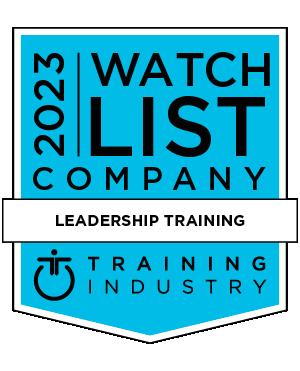


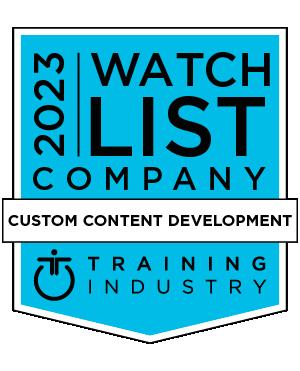

The rapid advent and adoption of new technologies in the workplace is creating a significant gap between those workers who are proficient and those who are not. At the same time, automation is phasing out previously critical positions, forcing workers to adapt to new roles — and in some cases, entirely new careers.
According to McKinsey & Company, 87% of companies say they have skill gaps among their workforce. Such gaps not only impact a company’s productivity but can also lead to low morale and a sense of frustration with one’s position, stunting employees’ long-term career growth.
Thus, upskilling — the process of developing skills to maintain one’s job — and reskilling — the process of developing skills to qualify for a different job — are vital to ensure employees are properly trained to fulfill the needs of their business. This is especially true where technology is concerned. Whether it’s software or hardware, the tech brought in to improve a company’s functions will be a wasted investment if no one can skillfully operate it. Training should be an integral part of transformation, not a caveat to it.
However, the burden of training cannot fall solely on the employees themselves. Bridging the digital skills gap is a crossindustrial, cross-organizational and cross-generational effort. It requires time, ample resources and individual engagement on the part of every learner. Coalescing all those factors can seem daunting, but it’s necessary.
The key is to create value for employees. Give them credentials for their new skills. Offer pathways to raises and promotions. By creating and implementing valuable, credentialdriven training programs, companies will foster a true learning incentive and manifest meaningful skill growth.
As the workplace evolves, so do the skills needed to function and be productive within it. To give a broad example, before the pandemic, being familiar with Zoom might have simply been a “nice to have,” but not a core competency. Now? It’s vital. This is a digital transformation that happened in the space of months — albeit precipitated by seismic world events — but nevertheless a widely felt example of how the skills necessary for a job can change in an instant.
On a more granular level, individual roles and niches, especially within the technology industry, are often subject to more incremental transformations. Software developers, for example, are consistently learning new coding languages and PaaS/IaaS platforms. Other companies, as their reliance on enterprise technology grows, are requiring deep specialization in programs like Marketo and Salesforce. These breakneck changes are gouging a wider divide in proficiency, and if workers can’t keep up the pace, their roles could be phased out.
There is also a generational component to the digital skills gap. Younger, “digital native” employees may have a leg up on other generations when it comes to adopting new programs and technologies — with such early and incessant exposure, they simply have the cognitive schemata to figure them out. On the other hand, older and longer-tenured employees may be more familiar with how training takes place at their company, even if they aren’t as familiar with the new technologies management is implementing.
The conditional “may” is critical language here. Everyone’s experience is different. People’s disparate backgrounds and exposures are part of what creates these skill gaps, but they also bring a valuable diversity of perspectives. By thoroughly considering the variations in their employees’ skill competencies, whether through surveys or on-site observation, companies can better design training programs that are truly equitable. From
there, the challenge is in creating and sourcing training materials that everyone can firstly understand, and secondly, in which they can see value for themselves as well as the organization.
Here are a few steps to ensure no learner is left behind:
• When implementing a new software system in the office, choose “ambassadors” to become experts on the program. They can then help train new employees.
• Invest in and develop courses with digital certifications and badges. Not only will it help you keep up with who’s qualified, but learners can share them on social media and use them to fuel their own career growth.
• Make learning feel less like a chore by building it into daily operations. For example, managers can help their direct reports organize their schedules and tasks so training can happen on the clock. Holding interactive, fullteam trainings can also get employees more engaged.
• If possible, try to match the pace of integration/implementation with the pace at which your employees can realistically receive training.
Keep in mind that skills development should also be happening at the individual level. With the recent growth of artificial intelligence (AI) and widespread automation, workers are seeking to create highly specialized roles for themselves to reinforce their value. To that end, people’s unique talents and interests are more powerful than ever before.
Many workers will leave a job because they either don’t see an opportunity for growth, or they aren’t given the opportunity to gain the skills necessary for an upward move. Moreover, if they don’t have the proper skills to meet the evolving demands of the business,
Digital transformation is more than just another workplace buzzword — it’s the here and now, impacting all our lives as we forge our careers.
they’ll be less effective and less fulfilled in their roles. In short: People aren’t going to work hard if they don’t feel their hard work is leading them anywhere.
Investing in upskilling and reskilling employees is thus instrumental in maintaining a productive and engaged workforce. New skills not only give employees more satisfaction in their jobs, but they also afford increased leverage when asking for raises and can be bridges to higher-paying jobs. Take Amazon’s upskilling program for example, which trains hourly workers in software development and other high-demand skills, allowing them to access higher-paying positions while keeping talent within the company and reducing turnover. Amazon has seen 70,000 employees take advantage of the program.
Amidst its challenges, digital transformation offers a wealth of opportunities. As new technology gains a foothold in the workplace, it creates the potential for a groundswell of specialized experts. People are building their own positions and finding a genuine
passion for their work — but not without the support of their organizations. Ultimately, effective professional development requires synergy between managers and employees to identify the upskilling/reskilling programs that will reignite their motivation and propel them toward their goals.
It’s not enough to simply teach someone a new skill — learners need proof of their accomplishments, whether that’s to land a promotion, secure a higher-paying job, or justify their competence in a new program their company is adopting.
Find your “a m bassado rs” to guide and mentor other empl oye es.
Ensure employees can obtain digital credentials for their training.
Integrate learning into daily opera tions.
By implementing upskilling programs that offer digital credentials, employers not only have the opportunity to address the technological skills gap, but to invest more meaningfully in their workers, giving them well-earned credentials they can take with them anywhere.
And that means anywhere. Their credentials need to be transferable and easily verified — this is why more companies and training organizations are opting for digital credentials, which can be searched in a repository and displayed on social media for optimized visibility.
Digital credentials are also more secure than traditional paper or PDF credentials, with many platforms offering bank-level encryption or even blockchain-backing, so employees know their proof of accomplishment is safe — and companies know their qualifications are real.
Digital transformation is more than just another workplace buzzword — it’s the here and now, impacting all our lives as we forge our careers. But while this great wave of change is creating the skills gap leaders must work to remedy, it’s also creating opportunities for growth, specialization and more efficient work overall. The key to bridging the skills gap is not to resist these changes or remove anyone who can’t keep up. Rather, it’s to find harmony between necessary training and employees’ interests, arming them with the tools and encouragement to achieve their potential.
Match the pace of te chnology adoption with the pace at which empl oye es can be tra ined.
Danny King is the CEO and co-founder of Accredible, a global digital credentialing platform that serves certificates and badges on behalf of MIT, Harvard, Google, Skillsoft and over 1,800 others. Email Danny.
For example, before the pandemic, being familiar with Zoom might have simply been a “nice to have,” but not a core competency. Now? It’s vital.
During times of unprecedented change, equipping and supporting middle managers has become critical to any organization’s success. According to a recent Forbes article, managers play a very important role in employees’ mental health — more important than a person’s doctor or therapist. Not only does this solidify how important managers are to an organization and its people, but it also puts a lot of stress on the managers.
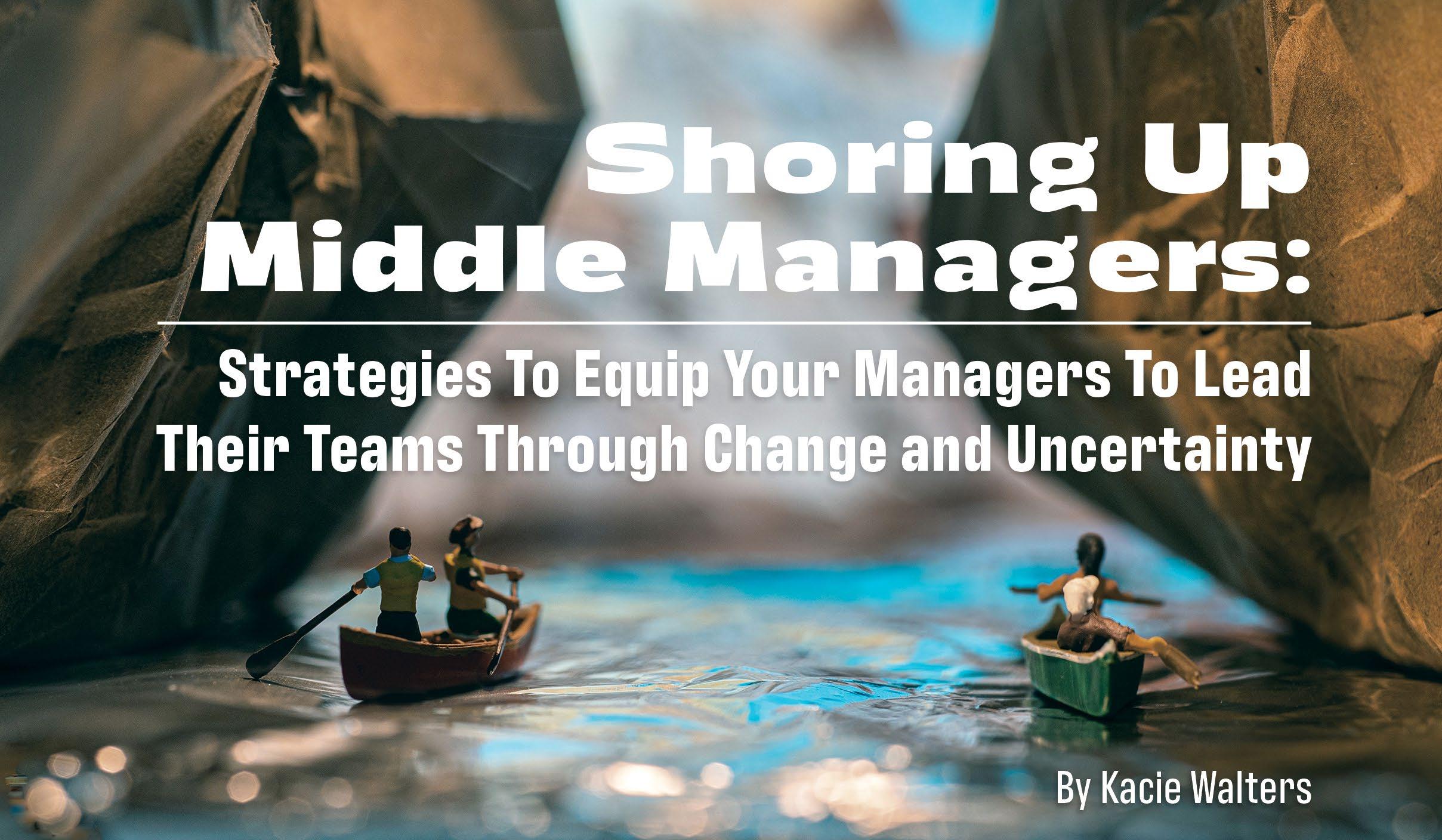
Burnout rates for managers are increasing as they balance their own projects and clients with guiding, counseling, coaching and setting up their own team members for success. To achieve this balancing act, managers need support to keep all their plates spinning.
There are many ways learning and development (L&D) leaders can provide support to this middle layer. Certainly, providing learning programs can help if people managers don’t know what or how to do something. But there are other areas to address to ensure managers have realistic workloads, greater role clarity and a common understanding of priorities.
Focusing on an entire manager ecosystem comprised of five different, yet related concepts provides a model to reinforce key manager skills and behaviors. These five areas include:
1. Appropriate spans of control.
2. Clear expectations.
3. Impactful development.
4. Personalized coaching.
5. Meaningful rewards.
By clearly articulating and supporting all five areas, L&D teams can equip managers to balance their workloads and stave off burnout.
The first step in the manager ecosystem is a concept called spans of control. This concept considers the scope of responsibilities, level and variation of tasks and circle of influence of the team and manager. Determining spans of control helps to ensure the appropriate number of people are reporting to a given manager.
For teams who work on more rote, repeatable tasks, managers can have 10 or more direct reports. If the team has varied or higher-level tasks, the general rule is that no more than seven people should report to a single manager. However, seven can be too many depending on the breadth of scope and responsibility. For very senior-level leaders, 3-5 direct reports can be enough, given that those leaders reporting to them are quite senior as well.
Here are some questions to ask to determine the appropriate organizational design of teams.
• Does the manager have too many direct reports based on the variety and complexity of work? If so, a manager may find it challenging to give personal attention to their team members and can burn out faster Consider splitting up teams or adding in a manager.
• Does the manager have only one direct report? If so, then they may struggle to create a sense of cohesion among the team. Roles and responsibilities can get blurry because it may be difficult to draw a line between what
the manager does versus the direct report. Consider folding a two-person team into another team unless there are plans to grow.
• Does the manager not have enough scope or influence based on the work? In this case, perhaps the manager has the right number of direct reports but lacks the authority to match the work they are responsible for. Consider working with leaders to ensure authority is granted to match the scope of work.
• Does the manager overlap with another manager in terms of scope? This situation can lead to confusion and disengagement in a hurry. While many of us may serve the same client or work on the same process or system, roles and responsibilities need to be clear and distinct. Consider getting clearer on roles, processes and hand-offs.
If we look at the level, variation and scope of the team’s work, this activity will help determine how many direct reports managers should have and can reasonably manage.
After determining the appropriate team design, ensure that the performance expectations of managers are clear,
reasonable, widely acknowledged and understood.
Unfortunately, some managers are unclear as to their role in processes like hiring, onboarding and career development. Some even think these activities are the sole responsibility of HR.
It is important to write down and share expectations of managers within the employee lifecycle framework. It is even more important to ensure people understand these expectations before they raise their hand to be a manager and even gauge their readiness level through an assessment, if possible. Setting better expectations of what it means to be a people manager up front helps set the right tone from the beginning.
These expectations also need to a part of the performance process, which means they should receive feedback and rewards related to management behaviors. Managers also need to be afforded the time to manage. Too many organizations add people management onto already more than full-time jobs. Management, as a role and skill set, requires time and energy to focus.
Manager expectations should include something around hiring and onboarding, managing and coaching performance, developing teams, guiding and setting priorities and inspiring teamwork and collaboration.
This seems like a lot because it is. But if spans of control are reasonable, and there are development, coaching and rewards in place (our next actions), these expectations are achievable.
The third part of the manager ecosystem — delivering effective development programs — is probably familiar to many of us. Providing skill development opportunities that match and reinforce the expectations we set for managers is essential to supporting managers. The behaviors and correlating skills needed should drive the content of the program.
Business has evolved dramatically in the last few years and how we best learn in today’s hybrid environment has too. While half-day and full-day workshops are still an option, there has been a shift to more of a drip method, where we integrate short bursts of dedicated learning time within a manager’s workweek. Instead of two focused days, offer two hours for 6-8 weeks with actions, coaching and connection points in between.
Along with formal learning, manager programs can include peer groups for discussion and coaching for continued learning. Nudges, tips and reminders sent via email or Teams at key points along the employee lifecycle, like hiring or performance review time, will keep the skills and content top of mind when managers need it. Success story articles and video or audio interviews of successful managers can also help to reinforce the learning and reward those star managers at the same time.
Employees are busy; managers are even more busy. Integrating development into their work can help them engage and ensure the learning sticks since we tend to forget over time.

As an extension of the formal development program, providing personalized feedback and coaching to managers will contextualize the skills and behaviors. This level of personal development can be delivered by L&D leaders or even other senior managers.
Equipping and supporting middle managers has become critical to any organization’s success.
Engaging senior managers either in title or years of experience is an excellent way to help them give back to the organization. This allows those managers to broaden their visibility and relationships within the organization and flex a different set of muscles.
Those managers being coached also receive practical feedback and coaching from someone who has been successful in the organization. Managers can use these coaching relationships as a safe place to voice sticky situations or new situations they have never dealt with from someone who may have walked in their shoes.
Supporting middle managers in today’s environment is critical to inspiring an engaged workforce, creating a sense of belonging, building productive teams and driving business results.

Focusing on learning and development alone will not be enough to provide the level of support and reinforcement managers need today. Focusing on five facets of a holistic manager ecosystem will create necessary clarity and communicate a commitment to managers.
1. Appropriate spans of control.
2. Clear expectations.
3. Impactful development.
4. Personalized coaching.
5. Meaningful rewards.
Our final component of the manager ecosystem is rewards and recognition. Often, organizations give accolades to individuals or project teams, and, of course, that is a very helpful way to acknowledge great work. What would happen if there were awards and recognition for the best people managers in an organization? This would do a few things:
1. It would emphasize that leadership values people management.
2. It would help our managers feel good and valued.
3. It would reinforce the skills and behaviors we desire.
Rewards and recognition can take many forms. These can include sending thank-you notes, featuring managers on your employee portal, telling
Focusing on all five facets of the manager ecosystem takes effort and commitment on behalf of L&D and leadership. The five facets, when tackled in the order listed, work together to support and reinforce manager behaviors, which will lead to better engagement and results.
stories of successful managers, giving awards — monetary or otherwise — for star managers, and tying bonuses or salary adjustments to people manager expectations and behaviors.
The idea is to provide all of the above, but these rewards should match the culture. If the culture isn’t one of rewards and recognition, start small by featuring managers through recognition or storytelling.
Enabling managers is one of the most important priorities for businesses today.
With constant change, lingering burnout, work and personal life balance struggles, shifting teams, layoffs, restructures, financial demands and economic uncertainty, our managers are the linchpin to our success.

Focusing on all five components of the manager ecosystem will ensure clarity, commitment, consistency and results.
Kacie Walters is the owner of Kacie Walters Consulting focused on learning, leadership, culture, and change strategies. Email Kacie.
Providing personalized feedback and coaching to managers will contextualize the skills and behaviors.
Transform your learning team into a high-performing learning organization. 3 2 1
Equip your training personnel with the necessary language and tools to drive impactful business results.
Align your training goals with the goals of the businesses you support.
Organizations that employ certified training managers are 4x more likely to be rated above average. Contact us to learn more about how certifying your team can drive lasting business success.

"Our partnership with TTA provided immediate help with creating and delivering a fundamental leadership training program and creating a 5year roadmap to stand up the L&D function ”
"Partnering with TTA has enabled us to offer customized and effectively timed skill development training across our entire organization "
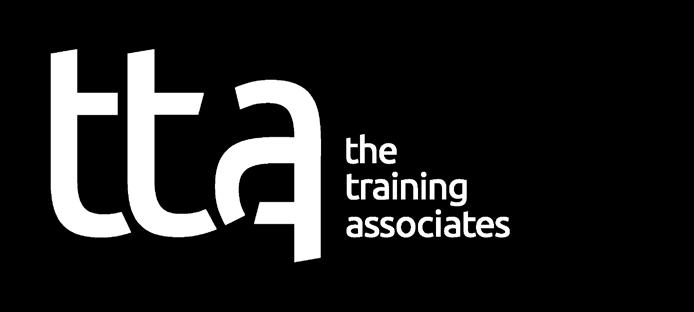 Devra Schachter Senior Specialist, Learning & Growth
Devra Schachter Senior Specialist, Learning & Growth
"Their support and collaboration have made this Learning & Development goal easier (and faster) to operationalize and as a bonus, we've developed genuine relationships with not just TTA but their facilitators as well ”

“
 Chris Cassell Director, Sales Development Operational Excellence (AMS)
Chris Cassell Director, Sales Development Operational Excellence (AMS)
" We were looking for an instructional designer but got much more regarding instructional strategy, project management, change management, and design thinking, and this project won a 2022 Brandon Hall Award for Excellence in Sales Performance "

"I'd recommend TTA to anyone who's moving fast and wants to �ex their learning and devel t ”

 Chris Barker Director of Consumer Education
Chris Barker Director of Consumer Education
"They provided a full stack of talent, from an experienced project manager to savvy technical producers to energetic facilitators We trained thousands of new customers together, consistently earning high Net Promoter Scores TTA made it easy to work with them from the beginning, with smooth contract negotiations, regular meetings with their team, and ongoing check-ins to ensure continued success "
Working with TTA is so easy! We were candid with our expectations, the skills needed, and the deliverables we expected – they did not disappoint! They provided us with skilled professional instructional designers who worked together as a uni�ed team ”
Mindi Gascho Adoption Director, LearningFailing to measure the job and skill competencies of employees objectively and quantitatively is not a problem until it becomes one. In the current business climate, where skill requirements can change from week to week, skills gaps can appear — and widen — faster than ever before. Add to that the quickly shifting dynamics between employer and employee, and you’ve got a major challenge for learning and development (L&D).
Filling skills gaps becomes easier if objective and quantitative rubrics are used to measure and document employee job knowledge and/or job skill competencies thus reducing or eliminating subjective assessments and/or bias toward the employee.
Quantitative employee competency rubrics are developed by identifying the knowledge and skill sets that are core to
employees’ job tasks. Their development and use also help to standardize both training and employee competency assessment of core job knowledge and skills. Job-related assessments are an important tool used to measure employee competency in core tasks to prove employees have the knowledge and skills to competently perform their jobs, a necessary requirement given today’s fast-paced environment. Quantitative assessment rubrics do have some limitations, such as not being able to quantify some behavioral variables that are often associated with job skills and customer service competencies.
Employees can be competent in their core job knowledge and/or skills yet offend customers and other employees with their language, actions or inactions. Supplementing quantitative performance measures with qualitative ones about their ability to work with others in group projects, design teams and to apply and synthesize what they have learned from training programs and experience might be needed to get a total picture of employees’ abilities.
Prior to developing a quantitative rubric to measure employee job competency, obtain the job task analysis (JTA) description for the job and learn what core tasks are required for the position. For example, an administrative assistant may perform many more tasks than what the title implies, but not all may need to be measured.
After reviewing the JTA for each job being evaluated, identify the relevant core job tasks and/or skills. These may include various skill levels (e.g., typing a specific number of words per minute, performing cardiopulmonary resuscitation (CPR) or flying an aircraft).
Instructional designers and/or human resource evaluators generally measure employee competency within three learning domains: cognitive, affective and psychomotor. The cognitive domain focuses on measuring employee knowledge about a job. Online or pencil-and-paper assessments can be useful instruments to measure such knowledge. A few examples are assessing employee competency about key organizational policies, rules and statutory requirements that directly affect his or her job.
Affective Domain measurement focuses on employees’ attitudes and feelings. An example is when the employee adheres to and practices safety guidelines during a training session versus totally disregarding them, thus endangering the safety of other trainees and training staff.
Psychomotor Domain assessment focuses on performance skills that
cannot be adequately assessed via online or pencil-and-paper testing. Correctly installing a can light in a ceiling is an example.
After identifying the relevant and core job knowledge, skills and/or tasks, multiple-choice questions can be used to assess specific employee
knowledge about them (e.g., how to file and handle confidential documents). A checklist can be used to identify the key steps necessary to demonstrate job skill competency. After reviewing employee training on job-related skills from the instructional lesson plan, identify those skills and steps that must be correctly performed to demonstrate skill competencies.
Next, sequentially list the steps for each job-related skill (use a separate page per skill). Determine a passing score from the steps that must be completed. If there are 10 steps and eight steps are critical to demonstrate skill competency of a core task, then a passing score of 80% (8 of 10 steps) must be achieved by the employee being evaluated.
Highlight the critical steps that cannot be skipped or improperly performed. These key steps are labeled “terminal” and will objectively result in documenting the employee’s inability to correctly demonstrate the skill being evaluated, thus requiring the employee to undergo remedial training and/or remedial assessment.
Given an automatic external defibrillator (AED), an adult mannequin, a flat surface for positioning the mannequin and instruction, the learner will demonstrate how to correctly apply the AED pads to the chest area with a minimum performance level of 100%. (Note: The employee must perform each step correctly to demonstrate competence and is only being assessed on how to correctly apply AED pads. Performing an AED shock is a separate skill to be measured.)
Steps to be performed:
• Position the mannequin onto its back.
• Open the AED case (if it is in one).
• Power the AED.
• Listen to the AED prompts and follow them.
• Open the person’s clothing so the AED pads can be placed on the chest.
• Remove the backing from the pads of the AED (usually by peeling).
• Attach the AED pads to the chest area locations per training.
• Attach the AED cables to the device if they are not connected.
(Incorrect demonstration of this skill will result in automatically failing, requiring remedial training before reassessment.)
Employees will say they are not against change, but experience has shown they are against changing.
When a terminal step is missed or improperly performed, this automatically identifies the employee’s inability to demonstrate competency in that particular skill. The employee will receive remedial training before being reassessed for competency.
Each job-related core task must have one performance objective per skill being evaluated. To personalize the evaluation, you must identify the conditions needed to complete the task, including the minimum passing score, as well as the steps that must be correctly demonstrated. Employees, whenever possible, should have their skills assessed in a real-world setting. This is referred to as authentic assessment.
Employees will say they are not against change, but experience has shown they are against changing. This goes for the evaluators, too. Prior to using a newly developed rubric to quantitatively measure employee competency, it is imperative to train the evaluators (i.e., trainers and managers) on how to properly explain and/or use it. The integrity of competency-based assessment depends largely upon the rubrics and how well they are used by evaluators.
Consider using hypothetical employee examples of core tasks to train the evaluators on how the relevant job tasks and/or skills were identified and how to measure them using the quantitative rubric. Develop three or four different hypotheticals for various work-related skills to make sure the evaluators learn to use the measurement system consistently and objectively. After each hypothetical skill assessment, ask the evaluators to discuss how they measured competency. This is a great opportunity to address any confusion or ambiguity, and to seek rubric feedback. Amend the rubric or the evaluator training based on their feedback.
Assume a high school requires its faculty and staff to know how to properly apply
an automatic external defibrillator (AED). Annual competency assessment and documentation of these employees is required (psychomotor domain), along with a written assessment (cognitive domain). A singular skill competency quantitative rubric is shown in the sidebar.
Discuss the quantitative competency rubric with employees so they will understand how it will be used to objectively evaluate their competency about job knowledge and/or skills (for example, the correct application of AED pads to the chest area). No one likes surprises, unless it is a birthday party or gift, so educate them about the assessment process. Explain how the quantitative rubric was designed to objectively measure and determine their job-related competencies.
training and reassessment, make sure these are explained in a positive and encouraging manner.
Keep in mind that today’s employees may not speak English as a first language or may have a learning or other disability that may impact their knowledge and/or skill assessments. Depending on the hurdle, evaluators may need to make reasonable accommodations for those employees. If an employee has trouble taking an online or written cognitive domain assessment because of vision impairment or dyslexia, for example, a reasonable accommodation may be reading the question and possible answers before asking the employee to verbally identify the correct answer.
In summary, competency-based assessments help organizations manage risk through quantitative measurement of employee core tasks. Should a customer claim an employee caused a personal or property injury because of incompetency, providing competencybased assessments will help to mitigate these allegations. Of course, there is always operator error, even when the employee was deemed competent in job knowledge and/or skills. Similarly, reviewing a quantitative competency rubric with a disgruntled employee and explaining the competency assessment was objective and not subjective, may eliminate further legal action.
Following the competency-based assessment, review its results with the employee regardless of the outcome (pass or need remedial instruction). Focus on the positive and how the quantitative rubric helps all employees improve their job knowledge and/ or skills, and how this impacts their career and the organizational mission. For those employees who need remedial
Developing competency-based assessments takes time, but after they are developed, these assessments can be used until there are changes in job knowledge, skills or training. Evaluator favoritism of the employee and/or implicit or actual bias are also minimized or eliminated using quantifiable and objective rubrics to measure, determine and document employee job competencies.
John G. Peters, Jr., Ph.D., has over 30 years of experience as an instructional designer and in developing job-related, competency-based skill assessment rubrics. He holds a post-doctoral M.A. in career and technical education from California State University, San Bernardino. Email John.
Failing to measure the job and skill competencies of employees objectively and quantitatively is not a problem until it becomes one.
s the pace of change within organizations continues to accelerate, the learning and development (L&D) function must undergo revolutionary changes to catch up, keep up and, ideally, get ahead. L&D departments have traditionally focused on helping employees gain critical skills needed to perform in their roles. Currently, much of L&D interactions with the rest of the organization are from ad-hoc requests that serve an “order taker” role. This type of ad-hoc interaction, or interaction without integration into personal development or organizational strategy, is challenging for L&D, as the half-life of a skill is only two and a half to five years, and 50% of the skill sets needed for jobs will change by 2027.
Moving from transactional, ad-hoc skills management to a transformative learning ecosystem will ensure learning is a key element in realizing the business strategy. Now is the time to rethink the learning ecosystem that has historically been used and assess new options that may better align with the evolving business strategy and needs of the workforce.
To remain nimble, organizations need to adjust their learning ecosystem operating models. A learning ecosystem represents the tools, techniques, resources and places
where learning happens across the organization. The right model for a given organization is aligned with the business strategy, reinforces the business culture and ensures all components are interconnected to remain flexible and supportive of the continuous changes of the business. Creating a learning ecosystem will fuel continued learning, building critical skills and capabilities ahead of the competition.
Typically, L&D functions fall into one of three distinct operating models that support a learning ecosystem: decentralized, centralized and federated (hybrid). It is helpful to gain knowledge of each model to assess the best alignment to the business strategy.
Business units operate their learning initiatives autonomously with limited control or governance from a single corporate L&D department. Individuals responsible for the design and delivery of learning programs report to separate business units. See Figure 1 for an example.
Pros:
• Clarity: Clear lines of ownership and accountability.
• Relevancy: Highly specialized knowledge and expertise related to a specific business unit.
• Immediacy: Provides quick response to immediate and specific business unit needs (identifies needs, creates and maintains content).
Cons:
• Inconsistency: Duplication of programs and offerings across the organization with inconsistent quality standards.
• Visibility: Lack of centralized reporting and visibility into values-based metrics.
• Limited Capability: Inability to address organization-wide learning needs.
Ownership of the enterprise-wide learning strategy and associated governance resides in a centralized L&D department. There is strong collaboration with business units to understand and act upon carefully assessed needs . All learning professionals report centrally, where the design and delivery of learning solutions are managed. See Figure 2 for an example.
Pros:
• Efficiency: Optimize operations through reduced redundancies with high levels of accountability and transparency.
• Consistency: Consistent learning culture throughout the organization.
To remain nimble, organizations need to adjust their learning ecosystem operating models.
• Quantify: Facilitate alignment to broader business needs with the ability to quantify standardized learning outcomes.
Cons:
• Capacity: Limited ability to meet the full demands of the business units’ continuous learning needs
• Scalability: Learning solutions are more generalized to meet the broader needs of the organization, missing unit-specific nuances.
1. People: All the organization’s learners, those involved in creating, developing and deploying learning and key stakeholders.
2. Content: Learning collateral (e.g., videos, eLearning, quick reference guides, etc.) and informal learning content shared through on-the-job knowledge sharing and communities of practice.
3. Technology: Systems, tools and technology to aid in the delivery and tracking of employee learning, focused on user experience and global accessibility.
4. Data: Measuring and tracking the e ectiveness, value and business impact of learning initiatives.
5. Strategy: L&D vision, guiding principles, long-term goals and governance defining the learning culture and how learning will drive the growth of employees in alignment with the business strategy
• Relevancy: The L&D team sits away from the business unit, heavily relying on the accuracy of training needs assessment to drive programs, content, and learning experiences.
3. Federated (Hybrid) Operating Model
This model includes collaboration between a centralized L&D function and business unit L&D teams. Ownership of learning program standards and governance resides in the centralized L&D function, with business unit L&D teams designing and delivering learning assets specific to their business unit. A federated operating model typically includes a learning performance partner role responsible for facilitating interactions between the business units and centralized L&D function. See Figure 3 for an example.
Pros
• Flexibility: Balances freedom with control by responding to the changing needs of the organization at the business unit level while maintaining a strategic enterprise-wide view.
• Quality: Establishes and reinforces quality standards and process efficiency through central governance.
• Fosters a strategic, long-term approach to a unified learning culture.
Cons
• Clarity: Unclear roles and responsibilities between L&D teams.
• Complexity: Potential dotted line relationships and multiple learning needs mapped separately creates a complex framework.
• Inconsistency: Possible contradictions between central and unit-specific solutions.
Learning ecosystems evolve on purpose, combined with an overall strategy that gives organizations the ability to build and alter the operating
model to meet challenges as they arise. Understanding how the various parts of a learning ecosystem interact with one another is critical to selecting one that supports broader organizational goals.
Consider these three factors and assess them against the operating models to find the right fit:
1. The Organizational Structure
• Scalability: Large global organizations that are highly decentralized and operating in multiple markets will work well with the decentralized operating model.
• Economies of scale: Small- to medium-sized organizations that are highly centralized with a small number of markets or products align well with the centralized operating model.
• Expansion: Fast-paced organizations supported by strong collaborative relationships between HR business partners and the L&D function are a great match for a federated model.
• Decentralized model: The rate at which employees’ roles change in the organization, high levels of internal mobility equate to frequent reskilling and upskilling by role, requiring just-in-time and frequent learning interventions for each business unit.
The most e ective L&D functions are adopting an operating model that flexes with the needs of the business.
• Centralized model: A heavy focus on succession planning and talent designations, offering leadership development to a broad category of individuals across the organization where common leadership frameworks and programs are easily accessible by a broad range of employees and leaders.
• Federated model: Environments where learners have little time dedicated to learning, where broad-based learning is accessible in a variety of modalities, along with technical training and on-thejob training options accessible at the point of need.
While perhaps harder to define than the other factors, the learning culture is a set of values and practices that promotes continuous learning, setting the tone and expectations for how employees interact with the learning ecosystem.
• Diverse learning cultures that vary based on region or business unit align with a decentralized model where the unique learning culture can thrive independently.
• Enterprise-wide learning cultures where one vision and mission for learning is set and shared at the strategic level support a centralized model where one strategy drives the learning function.
• A balanced learning culture that moves towards one overarching learning vision, leaving flexible elements for business units to modify as they see fit matches the federated model in offering a mix of learning cultures threaded by one overarching vision.
The most effective L&D functions are evolving the organizational learning ecosystem and adopting an operating model that flexes with the needs of the business, the needs of the learners, and the learning culture to drive a continuous learning mindset that moves the business forward.
Elizabeth Greene is the senior director of global learning and development at Lam Research, with 20 years of experience in reinventing corporate learning strategies. Email Elizabeth.


Why is it “out of this world”? Because I recently used it to evaluate training at the National Aeronautic and Space Administration (NASA). But before we go to a galaxy far, far away, let me give you a little down-to-earth context.

I recently contracted to do training measurement work for the federal government. This meant assessing the impact of training at organizations like the United States Department of the Interior (DOI), The Food and Drug Administration (FDA) and NASA. As this work began, and we began to scope the potential impact of the training (what we call the “story of impact”), the critical questions that continued to arise were “Can we apply a 6-level model of training evaluation?” and if so, “What level of impact can we measure up to?”
The reason why this became a sticking point was that most organizations that measure the higher levels of impact (like Levels 4 and 5) are for-profit businesses using Level 4 to look for “business impact,” which typically means an
increase in revenue or cost savings for the company. This revenue or cost saving is then compared to the overall cost of training and a return on investment at Level 5 can be calculated. This focus on business impact and ROI clearly wasn’t going to work for agencies that don’t define success in terms of profit and loss.
So how would we apply our 6-level approach and customize it for this government training? The general consensus was that we can certainly tell our story of impact up to Level 3 (employee behavior changes and onthe-job improvements that are “mission critical”), but when we get to Level 4, we had to push our thinking away from how these behaviors impacted the “business” to how they impacted the “health of the organization.”
In other words, what organizational outcomes can we expect to improve by having all their employees go through training? It may sound like a semantic difference, but until we teased out this distinction between organizational and business outcomes, the stakeholders
were not convinced we were shooting for the right story of impact. Here’s how we defined each level of impact and how they differed from a purely business ROI approach.
Level 1 measures participants’ experience in the training. Were they engaged with the design, the content and the way it was delivered? This level of data works for both business and government, but one distinction here was our government stakeholders were especially tuned into how relevant their training was to the specific role of participants and how recommendable it was to peers in
MEASURING THE IMPACT OF TRAINING IS NO LONGER A NICE-TO-HAVE. IT’S AN ABSOLUTE LEARNING AND DEVELOPMENT IMPERATIVE
the same position. This was important because it immediately indicated (right after the training) if the content was on target or had to be revised.
Level 2 measures participants’ new knowledge and skills that were acquired during the training. Are they leaving with new learning and capabilities that will help them do their jobs better? This may also include an attitude change or a new way of looking at a problem. While we typically conduct these assessments with business clients by asking a few simple questions about the new knowledge they gained, it was especially important for these government agencies to understand the real difference between where employees were before and after the training.
To accomplish this without a rigorous pre- and post-test at Time 1 and Time 2 for all training sessions, we used a retrospective scale that carved out each unique knowledge topic and then asked participants, within the same question, to rate where their level of knowledge was before and after the training. Thus, the difference or percent increase in knowledge for each session could be quantified using only a post-training assessment.
Level 3 measures whether participants are returning to their everyday jobs and actually applying what they learned in training. Level 3 is probably the most critical measure because if behavior change doesn’t happen, then all the training impact stops there. Conversely, if you can demonstrate that your training improved the way employees do something, these improvements can then be correlated to the critical metrics that matter most to the organization. And as important as it is to a business impact story, it’s even more critical to a government impact story because these “mission-critical” behaviors have historically defined the success or failure of their training initiatives.
To measure this level for NASA and the DOI, we asked questions about improvement in crucial behaviors 6090 days post-training and asked raters to use a scale from “no improvement” to “exceptional improvement.” We were then able to report the percentage of participants, and other
Satisfaction: Did they like it?
Learning: Did they learn anything?
On-The-Job Improvements: Did they do something di erently or better?
Business Impact: Did it impact business performance?
ROI: Was it worth it?
Transfer Climate: What factors maximize the impact of the training?
rater groups, that observed each level of improvement back on the job. This level of measurement is crucial because it shows that the learning at Level 2 was transferred and applied on the job at Level 3.

Level 4 typically measures whether these behavioral improvements actually lead to better business metrics and higher performance. Here is where we had to make a significant divergence from business impact and focus on organizational efficiencies that could increase organizational health by saving time, resources and/ or budget. To do this, we had to look at the overarching objectives of the entire agency, look at the mission and vision of the agency and look for how the behaviors taught in training specifically fed into those larger objectives.
For instance, instead of asking about how satisfied paying customers were with a business service, we asked questions about how the DOI was able to make quicker decisions and resolve federal land disputes, and how NASA was able to create internal efficiencies where participants could have more productive and inclusive
hybrid meetings, spend less time in unproductive meetings and thus spend more time sending people into the stratosphere.

Level 5 measures the extent to which the benefits of a particular training experience outweigh the costs of that training experience. The ROI calculation can only be done when the benefits identified in Level 4 have been monetized and turned into dollar values for the organization. Once monetized, they can then be compared to the total costs, which are already monetized.



How could we possibly do this for agencies that aren’t looking for financial ROI, but still want to know whether the training was “worth it”? Here we proposed translating at least some of the efficiencies and outcomes we found at Level 4 into a quantifiable dollar benefit. For example, if issues are being resolved quicker, or employees are having more productive meetings, then we can quantify the “hours saved” into salary dollars saved.
Level 6 is an evaluation that simply measures your learning climate and
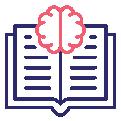
tells you which environmental factors are most affecting the impact of your training. That is, what are the environmental factors (things that are happening in the employee’s immediate work environment) that are either supporting or sabotaging the impact of training back on the job?
We call these Level 6 ROI Maximizers (for business) or the “Transfer Climate” factors (for other organizations) because it tells us exactly which climate factors are most powerful when employees attempt to transfer what they learned in training back to their everyday jobs. I see it as a critical level of evaluation because this additional analysis can ultimately tell you how to improve the impact and ROI of any training program in the future.
For instance, for the DOI, we measured how immediate manager support can influence the effects of training and found that high manager support can more than double the impact.
Measuring the impact of training is no longer a nice-to-have. It’s an absolute learning and development imperative everywhere training is delivered. Whether you’re a business looking for a profitable return on investment, or a government agency looking to increase the health of the organization, you must measure the impact of your training. And whether you’re training employees in this world, or out of this world, stakeholders will still be asking the same question: “Did the training work?”
By pushing your evaluation strategy to higher levels of impact and using a simple 6-level approach, you will not only be able to tell your stakeholders whether training is “working” or not, but also tell them how to improve that impact. By simply defining how training leads to new learning, how learning leads to mission-critical behavior change and how those behaviors then lead to positive organizational outcomes, your measurement results will tell the entire story of impact. It describes in very critical detail the employee’s journey from a training event to their
organization’s ROI, and it allows you to identify all the factors along the way that can either help or hinder them from reaching their performance destination.
Simply put, measuring the impact of your training will maximize the impact of your training. So, if that training is for government employees who make our world a better place, then that’s reason enough to measure impact. And if that training is for employees who shoot asteroids out of the sky before they reach our world, then that’s an even better reason to measure impact.
Dr. Paul Leone is an industrial/ organizational psychologist, author and leading expert at evaluating the impact of training initiatives. He is the founder and principal consultant for MeasureUp Consulting, where he helps training providers and internal L&D leaders tell the valuable story of how training impacts the bottom line. Email Paul.
MEASURING THE IMPACT OF YOUR TRAINING WILL MAXIMIZE THE IMPACT OF YOUR TRAINING.
Writing in the 1980s, futurist Alvin Toffler predicted a blurring of the lines between production and consumption into the 21st century and coined a portmanteau term — prosumer — to describe it.
So influential was Toffler’s thinking that the concept of the prosumer has been adapted and explored in innumerable fields since. From economics and politics to electronics, architecture and user design, Toffler’s notion of the prosumer has cemented itself as a vector for identifying and analyzing various trends in the modern world.
Notwithstanding the multitude of interpretations that surround the concept, this article takes Toffler’s notion as its point of departure for exploring the blurring of the boundaries between production and consumption at work and how these can be harnessed to improve business outcomes.
To begin, let’s clarify what is meant when we say that the employees of today can be likened to prosumers.
Success in business is often reliant on making the right choices and being able to influence people. Think about it. The standout business success stories
of the late 20th and early 21st century are all poster children for good choices and persuading people:
• Apple and the iPod.
• Amazon and Prime.
• Tesla and electric vehicles.
In 2001, Apple made a solid bet that the future of music was in your pocket. The technology was there, sure, but the kicker? Users needed to repurchase their back catalog for 99 cents a song. An estimated 450 million iPod products have been sold worldwide.
How do you wean customers off “free” shipping and offset the costs that are eating into your profit margins? For a few bucks a month, Amazon offered Prime customers some exclusive video content to sweeten the deal.
Finally, consider the electric car industry:
• The electric car pre-Tesla: ugly, slow and expensive.
• Target market: eco-warriors and enthusiasts.
• The electric car post-Tesla: still expensive, not without its drawbacks, and yet widely considered among
the most desirable big-ticket items you can purchase right now.
In each of these examples, some of the world’s most admired companies made good choices and successfully convinced customers despite their initial and very valid reservations.
Making choices is what we do as customers. Influencing people is what we do as salespeople. Both skills are the flipside of the same coin — push and pull factors that affect the symbiotic producerconsumer relationship.
In the world of work, we oscillate between the role of customer and salesperson and back again with remarkable regularity. How often do you find yourself coming up with a great idea before finding that you need to secure buy-in from colleagues to get it off the ground?
Or consider you want a raise. You need to sell your achievements to your boss, but what are these achievements if not
MAKING CHOICES IS WHAT WE DO AS CUSTOMERS. INFLUENCING PEOPLE IS WHAT WE DO AS SALESPEOPLE.
examples of when you made the right choices? Think of hiring: You’ve got to pick the right candidate, but in the war for talent you’ve got to convince them too.
It is in these business and career examples that the blurring of the consumptive and productive realm Toffler talked about begins to make a little more sense.
For businesses today, customer service is not just an external activity, but an internal one as well.
Mastery of good customer service on both fronts (internal and external) is why salespeople often tend to make great CEOs, according to Forbes. Influencing people is what they’ve done all their lives. Elevator pitch? You got it. But good salespeople (and good CEOs) also make good choices because they know how to put themselves in other people’s shoes. When a good leader makes choices, they hire the right people, capture their hearts and minds and invest wisely by listening to their customer base.
Not all of us are born CEOs. But all employees, whether back-office or customer-facing, could benefit from grasping the fundamentals of customer service and how it inflects much of how we do business today.
This is why all employees, from top to bottom, would benefit from customer service training.
When we start to think of colleagues as customers, chances are that we begin to value our relationship with them a little more. On the one hand, when we think of our colleagues more like customers, we tend to put greater emphasis on the quality of our communication
Most of us are more inclined to choose our words more carefully and consider how
we present ourselves when interacting with a customer or external audience than we are with our co-workers.
While almost always unintentional, poor communication leads to conflict. If we can learn to value relationships from the get-go and adjust our communication style accordingly, we stand in much greater stead to cultivate more productive and fruitful working relationships with co-workers in the long term.
We all deserve to be valued and treated well at work, and if more of us are on our A-game and put emphasis on quality interactions we will certainly work better as a team.
leaders and HR functions increasingly thinking of their employees and potential employees as their customers.
In short, this means not taking your employees’ loyalty for granted and making a concerted effort to win hearts and minds over, just like you would with any winning customer strategy.
To put this into practice, engagement is key, and leaders need to ensure that they are listening to their employees
More broadly, it’s about fostering a culture of excellent internal customer service, in your psyche and culture, which is only reinforced by putting greater emphasis on the quality of our communication and interpersonal relationships over time.
In an era of remote working, white-collar workers have more choice than ever. This is not just about who offers the best compensation anymore (though that is still important). Employees today are increasingly looking for alignment between an organization’s values and their own.
As a result of this shift, we’ve seen the rise of employer branding and the employer value proposition, with senior
We know that companies that look after their customers tend to be successful ones. Therefore, an understanding of how internal customer service, and by extension customer service training for all employees, can have on building a culture based on excellence is incredibly powerful.
We live in a world of endless choices, where every interaction is valuable and meaningful. By taking tips from customer service pros, innovative businesses can apply their winning insights internally to drive positive outcomes in the long term.
Jane Rexworthy is an executive director of People 1st International. She is a CIPD-qualified senior strategic business development professional with 15 years’ experience working within technical vocational education internationally and in the UK and over 15 years in blue chip companies within the private sector. Email Jane.
EMPLOYEES TODAY ARE INCREASINGLY LOOKING FOR ALIGNMENT BETWEEN AN ORGANIZATION’S VALUES AND THEIR OWN.

 By Michael McNary
By Michael McNary
Close your eyes. Picture a sales room. Are there a dozen reps sitting side-byside? Are half of them on the phone and the other half talking a mile a minute? Are they ribbing each other, checking leaderboards and making challenges?
What you’re picturing might be stereotypical. It might not be exactly what the sales floor looks like at your organization. Yet what you’re picturing is also a crucial element of sales training: informal peer-to-peer learning
When it comes to sales training, many businesses are eager to invest. They ask their learning and development (L&D) teams to design new-hire onboarding, host annual kick-offs and contract thirdparty sales methodology training to make sure their reps have all the tools necessary to hit (and exceed) quota. Yet while all of these formal programs support a successful sales organization, winning salespeople will tell you they learned the most from the reps sitting in the same room as them.
Close your eyes again. Picture your sales team as it really is today. Are some of your reps working from home? Are they spread out across offices, time zones or even countries?
The challenge for today’s sales leadership and sales trainers is to figure out how to build informal peer-to-peer learning into hybrid workforces. While there’s no one-size-fits-all approach to accomplishing this, many organizations are solving this problem in creative ways. Read on for four ideas from sales training experts Jen Allen-Knuth (Lavender, formerly at Challenger), Leslie Douglas (JB Sales), and David Dulany (Tenbound).

For decades, businesses have invested in offices that allowed for sales “bullpens,” where reps sit next to each other and their managers. The traditional bullpen allows reps to hear each other’s calls, ask each other questions in the moment, lean over to see each other’s screens, and to get in-the-moment coaching from their direct managers.
Supporting a hybrid sales workforce requires the same intentionality as creating a bullpen in the physical office. For a close approximation, David Dulany, founder and CEO of Tenbound, recommends hosting a Zoom room that stays open for a standard set of hours. This could be for each manager and their direct reports, or it could be for a larger group of reps. Either way, set an expectation that everyone joins with their cameras on and their mics unmuted (to a reasonable degree). This allows managers and peers to overhear each other’s calls, ask questions as soon as they come up and also build camaraderie so they trust each other enough to give feedback
For another, more targeted approach, Leslie Douglas, vice president of sponsor sales at Sell Better, suggests setting up regular meetings between reps for peer-to-peer feedback. These could be one-on-one or small groups. The important thing is to put them on the calendar, keep them regular and give parameters for what kind of feedback they should give each other. This way, you set the expectation that reps should rely on each other for help, even when they aren’t physically together.
In the traditional bullpen environment, reps start sharing stories with each other naturally. It is a way to blow off steam, bond with deskmates and maybe even kill time before their next round of cold calls.
In a hybrid workforce, it takes further encouragement. From his vantage point helping start and run business development teams for tech companies, David Dulany recommends requiring reps to share stories in daily stand-ups. Depending on the size of your team, this might not be every rep every day. However, many reps you can include, be sure to encourage both success and failure stories. They can be as small as an anecdote on building rapport over the phone or as big as tracing a deal win from the first cold call through to the contract signing. The point is to help reps break the ice with each other, so they continue to talk after the meeting ends.

For Jen Allen-Knuth, head of community growth at Lavender, it is important to keep the focus on how reps are beating their own personal goals, rather than creating an overly competitive environment. She sees success when salespeople are in

Leaders can start an environment of feedback by modeling it themselves.
Peer-to-peer learning is crucial to successful sales teams. Not only does it help with knowledge transfer, but it also builds team morale and gives young reps a glimpse of future career paths.
competition with themselves. Sharing stories in a formal meeting helps reps see how they can learn a new skill, or how they can overcome their next hurdle, without becoming a place where people are shamed or bragging.
Informal learning often comes in the way of feedback. “Hey, I heard you say X on that call … what if next time you tried Y?” or reading drafts of pitch decks or even talking through the next move in a sales play. However, to give and receive feedback requires that your reps trust each other. That means you have to actively foster an environment of feedback

Douglas recommends you begin by modeling it yourself. Ask for feedback after you have presented a new idea to the team and in your one-on-ones. Make sure you give feedback, too, so that the whole team begins to expect it as part of your culture.
The entire team should be coached on how to give effective feedback. On a repto-rep basis, sales managers can and should get to know how each individual prefers to receive critical notes. As a team, you can train the whole group to offer constructive criticism without demoralizing each other. One example is the classic compliment sandwich Another useful tip Douglas suggests is to start with one or two things that the rep did well, then to focus on one or two things they can focus on improving. This makes the critiques feel manageable and helps the rep stay open to feedback.
With that in mind, Douglas also recommends being mindful about offering positive feedback. She compares it to reviewing a restaurant: We are much more likely to jump on a review site to complain about bad service than we are to heap praise on excellent service or to acknowledge good service. As a leader, she makes a goal of writing a note of positive feedback to at least one person per week. This is a practice you can encourage among your reps, too, to boost morale and make sure they feel seen by their leaders and their peers.
One advantage the hybrid workforce has over the bullpens of the 1990s: There is a whole lot more technology designed to improve the sales process. That same technology can also foster informal justin-time learning for your reps.
Take your chat solution, for example. Set it up with channels for each team, and job function — as well as the whole sales organization — that are dedicated to sharing stories and asking teammates questions. You might also set up chatbots to help point reps to the right resources at the right time. For example, if they type into the channel, “Where can I find this quarter’s pricing sheet?” your chatbot can respond with the link immediately, so that they don’t have to wait for a manager or peer to see the question.
On top of that, sales outreach solutions track much more data than ever before. Make sure you regularly share stats with your reps on what type of subject line is getting the most opens or replies,
or what steps of a cadence are most effective at booking demos or whatever other insights you can glean. This will help keep the whole team aligned, and it might even spark more anecdotal examples from reps.
Dulany even thinks there is room for technology to give just-in-time coaching to reps. He has seen solutions that use artificial intelligence (AI) to pop up on the screen during calls or emails with suggestions on how to change their approach based on historical data. This can help fill in for managers, particularly in hybrid environments, so that team leads can focus on more in-depth feedback during one-on-ones.
Ask any seasoned sales rep in your organization, and they will tell you a key to success early on is informal peer-to-peer learning. For young reps, this environment is not only about learning the skills and tools necessary to succeed at their jobs, but also about building morale and helping them see what a career in sales entails. Sales organizations need formal learning programs. As workforces become increasingly hybrid and complex, it is crucial that sales leaders — and the L&D teams supporting them — become intentional about fostering informal learning.
Michael McNary is the SVP of acquisition at Mimeo and host of Mimeo’s “Talk of the Trade” podcast for sales and marketing leaders. Over the course of his 15 years at Mimeo, he has mentored over 100 sales professionals in building their sales skills and achieving their business and personal goals. Email Michael.
The challenge for today’s sales leadership and sales trainers is to figure out how to build informal peer-to-peer learning into hybrid workforces.














 By J ason R. Weber
By J ason R. Weber



Robert Greenleaf has inspired much of what we know about servant leadership today. Greenleaf instructs us to consider how we apply servant leadership through the lens of a question: “The best test [of a servantleader], and difficult to administer, is: Do those served grow as persons? Do they, while being served, become healthier, wiser, freer, more autonomous, more likely themselves to become servants? And, what is the effect on the least privileged in society; will they benefit, or, at least, not be further deprived?”
While answering this question requires much self-reflection and self-awareness, there has been an inquiry into how this style of leadership can be applied to the workplace. Specifically, when we consider power dynamics within an organization, how can Greenleaf’s best test inspire how our teams function?
Russ S. Moxley, a fellow with the Center for Creative Leadership, states that we need to look at power through the lens of a partnership, not just a singular set of actions or behaviors. When considering leadership, especially servant leadership, we need to understand the five requirements for teams to operate through partnership:
1. There must be a balance of power. In “Focus on Leadership: Servant-leadership for the Twentyfirst Century,” Moxley writes, “A partnership will not work when one person has power and others don’t…Rather, each individual must claim their personal power to create win-win situations and reach a shared goal.”
2. There must be a shared goal. If we understand that each employee will look at a goal or situation differently, then we acknowledge the need to create goals collaboratively. A shared goal is one where everyone on the team understands and can identify how they personally will accomplish the shared goal.
3. There must be a shared sense of responsibility. “Everyone on the team needs to be responsible and accountable for the work.” Teams need to emphasize the role of team relationships. Ensuring clear
communication and transparent objectives will help every team member see where they fit and where their responsibility lies.
4. Partnership requires respect for the person. Emphasis should be placed on each team member’s strengths and interests. This is not to say that certain work can only go to certain team members, but if a team member is assigned a task that is not in their zone of strength, the team needs to recognize this and provide appropriate support.
5. Partnership must be applied in all areas of organizational life. As with most culture changes, teams cannot be selective for when they want to apply certain behaviors. There needs to be a desire from the team members to protect the relationships they have. Additionally, effort toward culture needs to be visible at all levels of the organization. When partnership is espoused, all team members should be able to identify those cultural behaviors regardless of who they are interacting with.
From these five requirements, we can ascertain that power includes goals, responsibility, respect and balance. But does this really define how we think about power? As servant leaders, do we “make” people do what we want? Or do we serve them in a way that inspires or influences them to, as Greenleaf writes, “become healthier, wiser, freer, and more autonomous?” This wordplay is important when we are developing an understanding of how servant leadership and power connect.
Let’s consider the five bases of power that were identified in 1959 by French and Raven
1. Legitimate: Positional power you receive based on your position or title.
2. Reward: Your ability to offer rewards or benefits in exchange for work.
3. Expert: Comes from having deep technical knowledge and experience.
4. Referent: Developed through relationships built on trust and respect.
5. Coercive: Involves using threats to make others complete tasks. While there are advantages and disadvantages to each of these types of power, we can connect each of these bases to the foundational elements of servant leadership.
Servant leadership deals with the reality of power in everyday life — its legitimacy, the ethical restraints upon it and the beneficial results that can be attained through the appropriate use of power.
Appropriate use is where the power of choice comes in. We know that everyone has the ability to choose how they respond and interact with others. Relationships at work and in life will require different applications of power. For example, Larry Spears writes about 10 characteristics of servant leadership in his book, “Focus on Leadership: Servant-Leadership for the 21st Century”:
WE NEED TO LOOK AT POWER THROUGH THE LENS OF A PARTNERSHIP.
1. Listening (Li): Seeking to identify the will of a group and help clarify that will.
2. Empathy (Em): Striving to understand and empathize with others.
3. Healing (He): Ability to heal the broken spirits of self and others.
4. Awareness (Aw): Understanding issues that involve ethics and values.
5. Persuasion (Pe): Convince rather than coerce others.
6. Conceptualization (Co): Embrace broader-based conceptual thinking.
7. Foresight (Fo): Ability to understand the lessons from the past, realities of the present and consequences of a decision for the future.
8. Stewardship (St): Committing to the needs of others through openness and persuasion.
9. Commitment to the growth of people (Gp): Committed to the growth of everyone within their institution.
10. Building community (Bc): Ability to create a true community through connection.
We can connect specific behaviors that are visible in the five bases of power (see Table 1).
Making a connection between the bases of power and the 10 characteristics of servant leadership highlights the importance of the choices we make as leaders. As leaders, we have to make a choice to use power for good. When we combine the 10 characteristics and the five bases of power, we create the ability to develop meaningful relationships that realize higher levels of effectiveness.
So, how do we do that?
While there are several models of how servant leadership behaviors can be applied in the workplace, Irving and Longbotham conducted research to identify the key behaviors leaders need to consider when infusing servant leadership into their teams. From their research, six behaviors were identified that, if followed, led to higher levels of effectiveness. These behaviors include:
1. Providing accountability: Leaders have the ability to set and clarify goals. Accountability is used to ensure the successful completion of these work goals.
2. Supporting and resourcing: Leaders have the ability to provide the resources (training, partnership, etc.) to their team members to ensure completion of their work goals.
3. Engaging in honest self-evaluation: Leaders have the ability to honestly self-evaluate before evaluating others. In other words, leaders can assess their role in the accomplishment of work goals, constantly seeking to identify where they can have the proper influence on their team.
4. Fostering collaboration : Leaders have the ability to connect team members within and outside of the team to ensure team members
are completing each other and not competing with each other.
5. Communicating with clarity : Leaders have the ability to communicate in a manner that provides clarity for their team.
6. Valuing and appreciating: Leaders have the ability to create environments where team members can show their genuine appreciation for those they interact with.
These behaviors give leaders a solid foundation they can base their behaviors around. If we believe that our role is to influence the next generation of leaders within our organizations, then servant leadership is a viable option for functioning as a leader. Leadership is easy. Being a leader is hard. We all have a choice to make when determining the amount of influence we want to have with our teams.
Remember what Greenleaf offers us with his best test: “Do those served grow as persons?” We have the opportunity to serve people daily — both at work and in our personal lives. What choice will you make? Don’t forget, positions and titles don’t matter at the end of the day. It’s about the relationships we create with others. So, how does power play into this? That’s up to you. We all have experienced power in positive and negative manners. When we strive to serve the needs of others, we ensure the long-term sustainability of our teams and organizations.
Jason R. Weber is the associate vice chancellor for leader and culture development for the Texas Tech University System. In this role, Jason is responsible for the design and implementation of values-based leader development programs for the 60,000 students, staff, faculty and leaders across five universities. Email Jason.
LEADERSHIP IS EASY. BEING A LEADER IS HARD.





As learning and development (L&D) professionals, we dedicate so much time and energy to developing our learners that we can neglect our own growth and development. Because training professionals can be found in companies of all sizes and industries, it’s not uncommon to feel adrift when it comes to steering our own careers, as there isn’t a one-size-fits-all career pathway in L&D. In this column, I aim to share valuable insights from Training Industry to empower you in your own L&D career journey. My hope is that you’ll discover useful tips and find inspiration to devote more time and attention to your own career development.
United States alone, underscoring the wealth of opportunities within the field.
Traditionally, L&D positions were classified into five primary training process categories, including:
1. Administration (e.g., coordinators, administrators, etc.).
2. Content development (e.g., instructional designers, content developers, etc.).
3. Delivery (e.g., instructors, facilitators, etc.).
4. Technology (e.g., learning technologists, etc.).
5. Leadership and oversight (e.g., training managers, training directors, vice presidents of learning, chief learning officers, etc.).
The good news — the outlook for L&D careers is quite promising! The demand for L&D professionals has been spurred by the rise of diverse work models, such as the gig economy and temporary work arrangements, as well as the heightened mobility of career paths. Additionally, advancements in technology and a shifting perspective on the strategic role of L&D in addressing business challenges have contributed to an increased need for L&D expertise.
Notably, data from the Bureau of Labor Statistics (BLS) annual Occupational Employment and Wage (OEW) report for training-specific jobs indicates a significant upward trend over the past decade. Even more promising, a quick search on LinkedIn reveals nearly 900,000 job openings for training professionals in the
However, the dynamic business environment and L&D landscape have given rise to new roles that prioritize consultation and partnership, emphasizing a deeper understanding of the business issues driving the need for training. Further, as the view of L&D has shifted to that of a strategic business solution, interconnections between other employee experience functions, like hiring, succession planning and performance management, have become a greater focus. Positions that encompass these changes emphasize experience mapping, career paths and competency modeling, as well as sourcing and curating materials to create learning journeys
Consequently, we’ve seen the emergence of newer job titles and positions with L&D teams that embody these newer concentrations such as curriculum architect, human
performance analyst, strategy and learning specialist, L&D curator, learning partner, learning experience designer, strategic capabilities partner and learning performance consultant. While each of these newer roles warrants unique L&D career pathways and development, Training Industry research reveals that the majority of L&D professionals espouse very similar career goals, with roughly 50% of L&D professionals aspiring to become L&D executives and another 20% seeking either training manager roles or independent consulting.
Salaries and responsibilities tend to increase as professionals ascend to executive positions, with CLOs commanding the highest salaries and facilitators and instructors often reporting lower salaries.
In forthcoming columns, I will continue to explore L&D careers, offering insights and guidance to aspiring and established training professionals alike. By delving into the diverse roles, emerging trends and essential strategies for career development, I aim to provide a comprehensive understanding of L&D career paths and the evolving nature of this critical profession.
To participate in Training Industry’s L&D salary and career development research, learn more here
Amy DuVernet, Ph.D., CPTM, is the director of training and development at Training Industry, Inc., where she oversees all processes related to Training Industry’s courses for training professionals, including program development and evaluation. Email Amy.

THE DYNAMIC BUSINESS ENVIRONMENT HAS GIVEN RISE TO NEW L&D ROLES.
This list curates all the best training industry listening content on a variety of learning and development topics.

The Business of Learning, the Training Industry podcast, features interviews with experts on topics that help training professionals more effectively manage the business of learning.
Sign up for our weekly newsletter to be notified whenever a new episode is released.
If there’s any truth to the adage, “The strongest steel is forged in the hottest fire,” we must be cultivating the greatest careers imaginable — because, let’s face it, it’s pretty hot out there. Massive reductions in the workforce in some sectors and impossible-to-fill positions in others. Customer demands outstripping supply chain capacity for some organizations while others are seeking new markets. Shrinking tenure and growing employee expectations. The heat has been turned up in all corners of the workplace, creating a hot mess for many.
And yet, when it comes to creating robust careers, the magic is in that mess. Skills and abilities might be honed within one’s comfort zone, but significant leaps happen when we step into the discomfort zone. That’s where the hottest challenges and richest development opportunities reside.
How can we use the “fire” within today’s workplace to forge stronger careers — for ourselves and others? Consider these approaches to turn the heat into opportunities for career development … without getting burned.
Want to immediately distinguish yourself in the workplace? Play with fire and volunteer to address a significant, broadly recognized problem. Raising your hand for such a challenge telegraphs your commitment and confidence. It garners visibility and an expanded network — sometimes at the highest levels. But volunteering to do it is just the first step; then you must deliver results.
That’s what Lanya, a learning and development (L&D) manager did.
After two stalled departmental efforts to replace an aging learning management system (LMS), Lanya threw herself into the fire and offered to lead a crossfunctional team to evaluate options and implement the change. Anticipating the toughest challenge of her career — a make-it or break-it experience — Lanya began crafting her project plan. But wanting to extract optimal professional development from the experience, she crafted an equally robust development plan. Layna isolated the skills that would ready her for her next role. She identified the people with whom she wanted to learn and with whom she needed to build relationships — and drafted her team accordingly. She reflected upon the leadership brand and reputation she wanted to cultivate and built-in opportunities to apply and spotlight those qualities and characteristics. In the end, she was right. It was the toughest assignment of her career — and one that garnered positive attention and the skills she was looking for.
Most of us don’t need to actively seek out challenges in today’s workplace; they find us, presenting themselves organically in day-to-day work. Reduced budgets. Fewer resources. Higher expectations. Shorter timeframes. The heat is already turned up each day we walk through the door — or portal — to work. But many employees are so busy fighting fires that they miss the opportunity to use those challenges for growth. “Staring into the fire” refers to the simple act of reflection. Every day, an endless stream of lessons washes over us, going unnoticed and unused because we don’t take the time to just think. Imagine the power of closing each workday by
asking questions like “What were today’s challenges trying to teach me?” or “What skills/abilities might have made today easier or more successful?”
Staring into the fire and reflecting upon questions like these is likely the most powerful and budget-neutral way to grow — in five minutes each day.
And finally, there’s a lot to be learned from evolving challenges and what’s hot in the workplace. Rather than sweating the future, forward-focused employees and leaders are becoming keen observers of the business landscape. They’re looking around the corner, allowing current events to help them understand, predict and prepare for what’s to come. They anticipate that it’s only going to get hotter in the years ahead. They’re allowing the fire to inspire personal change as they build the readiness, relationships, resilience and reputation for future success. The workplace is hot, hot, hot. And those who learn to leverage the fire for development will most certainly forge careers of steel.

SEPTEMBER 27-28, 2023 | ONLINE EVERYWHERE
You’re invited to join over 1000+ learning and development (L&D) professionals online this fall to build the skills you need to drive impact and maximize the return on investment (ROI) of your L&D initiatives!
CONDUCTING A NEEDS ANALYSIS
ALIGNING WITH ORGANIZATIONAL GOALS
L&D’S ROLE IN CAREER DEVELOPMENT

LEVERAGING TECHNOLOGIES TO SUPPORT A STRATEGIC PLAN

MEASURING THE IMPACT OF YOUR PLAN
AND MORE!
Access sessions specifically curated to assist you in developing a comprehensive learning strategy from the ground up.
Save your seat and register now for $99!
REGISTER NOW
SRINI PILLAY, M.D.Many people think that well-being is a "soft" issue and not a management problem to solve. According to a study by Gallup, the impact of well-being on organizational performance is significant. For example, lower well-being is associated with $322 billion dollars of turnover and lost productivity globally.
Well-being is usually associated with eating well, sleeping well, exercising and taking care of our energy. But we often do these things reactively, only thinking about well-being when we reach the stage of burnout.
There are many aspects of a highperformance mindset, but in this article, I’d like to focus on three: psychological momentum, an abundance mindset and the possibility mindset. Individuals should strive to develop these mindsets at work and outside of work to make high performance a defining characteristic of who they are as they develop as leaders.
Psychological momentum: When people win repeatedly, this is not simply an outcome. The “feeling” of winning is most powerful when it is experienced as an “embodied” phenomenon. As a result, it can be automatically activated
Think of a soccer player who scores a goal. Rarely do you see such a player run back to their teams with their hands by their sides. Usually, their hands are up in the air, they are running, their hearts are beating quickly, and the feeling of the goal that they just scored is etched into their brains.
To develop psychological momentum, there are three basic practices to remember: Celebrate wins with a whole-bodied expression. Don’t be shy to show a fist pump or a high five. And since winning is associated with advancing, have a place where you can document and observe those wins. Take strategic breaks to refuel your brain, and limit disruptions to your work or practice. When you’re disrupted at high momentum, it can take a far greater toll, compared to the impact of disruption on someone working at a steady pace.
Abundance mindset: A scarcity mindset is one where people believe that there are not enough resources to win. This lowers the activation in a brain region that helps with goal-directed choice. In addition, scarcity mindsets impact brains so that they have less control over their thoughts. That’s why people with abundant mindsets perform better. They are more driven to reach their goals.
If you lose a few battles at work, consider that there are plenty of battles to win. Don’t hold back on giving your energy to the next task at hand. When you realize that you have unlimited potential and don’t have to dole out your psychological energy with excessive caution, this can be helpful. People with scarcity mindsets are more concrete and less expansive in their thinking, and they also have lower well-being, higher fatalism and lower protective behavior against challenges to their immunity.
Possibility mindset: A person with a possibility mindset believes in long
shots. They go after high-risk, highreward targets. If you’re risk-averse, you might avoid this. But doing so will limit the gains you can make.
In the brain, this behavior is associated with the activation of reward circuits as well. People who think this way also overestimate the likelihood of success, but they’re not afraid of failure. They see this as a necessary “breakdown” that signals the need for course correction. When you’re biased toward optimism, you feel more motivated and creative, and you have greater self-esteem. You may think your self-esteem is more protected when you’re cautious, but this is not the case.
Mindset is central to well-being. And a winning mindset is informed (but not deterred) by risk because it is well-prepared.
Dr. Srini Pillay is the CEO of NeuroBusiness Group. He is a Harvard-trained psychiatrist and neuroscientist, on the Consortium for Learning Innovation at McKinsey & Company, and author of “Tinker Dabble Doodle Try.” Srini is also cofounder, chief medical officer and chief learning officer of Reulay Email Srini.

IF YOU LOSE A FEW BATTLES AT WORK, CONSIDER THAT THERE ARE PLENTY OF BATTLES TO WIN.
From learning technologies to information technology (IT) and technical training to leadership, all segments of the corporate training market have evolved alongside recent market shifts. The sales training sector is no different.
In today’s digital business environment, organizations are looking for virtual sales training and enablement solutions that provide reps with real-time support.
The demand for these solutions continues to rise. Training Industry’s 2023 “State of the Sales Training Market” report confirmed that sales training investment reached pre-pandemic levels in 2022, and that the sales training market is expected to grow by 13% globally over the course of 2023.
To meet this increased demand, sales training and enablement providers have been busy rolling out solutions and forging partnerships to do so effectively and at scale.
Here, we’ll explore how sales enablement provider Mindtickle’s recent acquisition of Enable Us, a buyer enablement provider, is set to streamline the sales process while also supporting reps’ professional development through AI-enabled coaching and learning reinforcement.
Mindtickle’s acquisition of Enable Us makes sense for a few reasons. For one, it brings buyer and sales enablement together in a single place, says Krishna Depura, CEO and co-founder of Mindtickle. Enable Us’ Digital Sales Rooms (DSRs) offer a collaborative space in which buyers can access relevant educational content (i.e., articles, videos,
FAQ documents, etc.) related to the provider’s products and services. The DSR also gives reps visibility into what buyers click, view and share, which can help them better understand customer pain points and needs. For instance, if a customer consistently views and shares content related to gamification, the seller can recommend gamified solutions to the buyer, Depura says.
Users can also create a “mutual action plan” — a customized sales plan that buyers and sellers create together. Users can view the mutual action plan to check the status of deliverables, check off action items and adjust timelines as needed. In the age of virtual selling, a mutually agreed-upon plan can help improve communication and transparency throughout the sales process.
The acquisition also gives Enable Us customers access to Mindtickle’s suite of sales readiness, conversation intelligence and sales coaching solutions, which are designed to bridge skills gaps and deliver personalized learning to reps through:
• Artificial intelligence (AI): Mindtickle’s conversation intelligence capabilities are integrated within its readiness platform. The platform uses AI to track, analyze and score reps’ interactions with customers based on data around topics, themes and deal risks.
• Skills mapping: The platform connects specific skills and competencies to revenue outcomes, helping sales reps better understand the connection between training and business results. This also helps
learning leaders make the business case for sales training and coaching to stakeholders, Depura says.
• Learning reinforcement: The platform uses AI to deliver spaced learning reinforcement, increasing the likelihood that reps apply what they’ve learned on the job.
Ultimately, Mindtickle’s acquisition of Enable Us is an effort to make both buyers’ and sellers’ jobs easier by bringing greater transparency into the sales process and supporting reps with personalized coaching and development. In terms of what’s next, Depura says, “this is just the beginning” of buyers and sellers coming together to forge a more collaborative sales experience.
With the acquisition, Depura says, “Mindtickle is pioneering an end-to-end solution for the entire lifecycle of a rep — from onboarding, practice, reinforcement, and coaching to day-to-day buyer enablement, conversation intelligence, forecasting, and analytics on both sellers and deals.” With the combined platform, sellers gain more visibility into buyer behavior and deal data is more personalized and actionable.
As sales training continues to evolve alongside shifting customer needs and business priorities, we look forward to seeing more sales training providers roll out end-to-end solutions that support both reps and the clients they serve.
Sarah Gallo, CPTM, is a senior editor at Training Industry, Inc., and co-host of “The Business of Learning,” the Training Industry podcast. Email Sarah.
Go1 , the world’s leading content expert, announced its acquisition of Blinkist, a mobile-first learning app that summarizes concepts from professional books and podcasts. The acquisition will contribute to Go1’s innovative new model of corporate training by helping to engage learners throughout their day-to-day lives.
Mindtickle, the global leader in sales enablement and revenue productivity solutions, announced its acquisition of Enable Us, the up-and-coming digital sales room and buyer enablement provider. The move will help to empower sales reps to collaborate digitally with buyers, use personalized content and accelerate sales cycles.
ELB Learning, the market leader with a comprehensive suite of learning products and services, announced that it would invest in integrating artificial intelligence (AI) solutions into its offerings. The investment is set to boost the functionality of platforms like CenarioVR, ELB’s revolutionary VR course creator.
FranklinCovey, one of the world’s largest and most trusted leadership companies, announced the launch of a new course, “Inclusive Leadership: Practical Ways to Cultivate Inclusion & Build a Better Team.” The course will help leaders create an environment where every member of the team feels valued and is presented with opportunities to thrive.
Rallyware, the leading performance enablement platform, announced its acquisition of Myagi, a retail sales enablement platform that empowers leading brands to share, measure and drive product knowledge and brand advocacy at scale. The partnership will enable enterprises to cut tech and training costs, as well as consolidate internal communications.
Learning Pool, the leading provider of eLearning solutions, announced a partnership with Mind Tools, the authority in leadership and management development. The partnership will
enable both organizations to more effectively explore the potential of generative AI tools (such as ChatGPT) for the benefits of learning and development (L&D).
Sales Empowerment Group (SEG), the outsourced sales and marketing consulting firm and portfolio company of RFE Investment Partners, acquired Action Selling, an award-winning sales training company. The acquisition will provide clients with a more comprehensive suite of solutions across the entire revenue function, including sales assessments, a multiprogram sales training platform and more.
iSpring Solutions Inc., the worldrenowned vendor of eLearning software and services, announced the release of a new feature in iSpring Suite: Users can now build their own illustrated characters to match brand identity, reflect the diversity of the workforce and better resonate with learners.
The Ken Blanchard Companies , global pioneers in leadership development, consulting and coaching for over 40 years, announced their major rebranding, including a streamlined name (Blanchard: The Heart of Human Achievement) and new logo, as well as updated mission, vision, tagline and website. The rebrand is set to better represent the company’s offerings.
NIIT, the global talent development corporation and leading provider of managed training services, announced its selection as a strategic partner of the EIT InnoEnergy Skills Institute. NIIT is set to provide the institute with services including onboarding, learning journey creation, training staff and localizing training materials.




















